David Douglas Duncan
"The pictures are there, and you just take them."
David Douglas Duncan, a renowned American photographer, is best known for his exceptional work in portrait and documentary photography. Over the course of his career, he captured some of the most iconic images of the 20th century, including powerful images of war, intimate portraits of artists, and striking scenes of everyday life.
Early Life and Career
David Douglas Duncan was born on January 23, 1916, in Kansas City, Missouri. He studied archaeology and zoology at the University of Arizona, where he discovered his passion for photography. After graduating, he worked as a freelance photojournalist, eventually joining the US Marine Corps as a combat photographer during World War II. Duncan's work caught the attention of Life magazine, leading to a long and successful association with the publication.
Photographic Style and Techniques
Duncan's photographic style is characterized by his ability to capture the human experience in its rawest form. His war photographs, for example, are known for their emotional intensity and unflinching portrayal of the realities of combat. Duncan's portraits, on the other hand, showcase his ability to connect with his subjects and reveal their true essence. He was a master of composition and lighting, using these elements to bring depth and emotion to his images.
Throughout his career, Duncan experimented with various photographic techniques, including the use of color film and wide-angle lenses. His innovative approaches to both documentary and portrait photography allowed him to create images that were not only visually striking but also emotionally resonant.
Career Highlights
Some of Duncan's most notable career highlights include:
His coverage of the Korean War, where he captured some of the most iconic images of the conflict.
His documentation of the Vietnam War, providing an unfiltered look at the horrors of war and the soldiers' experiences.
His intimate portraits of famous artists, including Pablo Picasso, Henri Matisse, and Georges Braque.
His photographic books, such as "This is War!" and "Picasso and Lump," which showcased his unique storytelling abilities.
Photography Gear
Throughout his career, Duncan relied on various cameras and lenses to capture his images. Some of the gear he used includes:
Leica M3: This reliable, high-quality rangefinder camera was perfect for Duncan's documentary work, allowing him to shoot quickly and discreetly.
Nikon F: Duncan was one of the early adopters of the Nikon F, a professional SLR camera that offered excellent durability and performance, ideal for his war photography assignments.
Wide-angle lenses: Duncan often used wide-angle lenses to capture his subjects in their environment, adding context and depth to his images.
Photography Books
"My 20th Century" is a curated selection of iconic photographs taken by David Douglas Duncan. The book includes riveting shots from World War II, the Korean War, and the Vietnam War, as well as intimate photographs of Pablo Picasso. Duncan's ability to convey the emotions of a world torn by war, invigorated by art, and shaped by diverse cultures makes this collection a valuable resource for practicing photographers seeking inspiration and insight into the power of visual storytelling.
"This Is War!: A Photo-Narrative of the Korean War" is a collection of combat photographs from the Korean War, marking the fortieth anniversary of the conflict. Showcasing the courage and determination of America's fighting men in Korea, Duncan's photographs offer invaluable insights into the realities of war, making it a must-read for photographers interested in capturing the human experience in challenging environments.
In "Picasso and Jacqueline", David Douglas Duncan presents an intimate photographic record of the life shared by Pablo Picasso and Jacqueline Roque, taken during his time spent with the couple from 1956 to Picasso's death in 1973, and until Jacqueline's death in 1986. As a close friend of the couple, Duncan captured their everyday domestic life, leisure time, and intimate moments, as well as Picasso at work on his paintings. This book provides a unique perspective on capturing the essence of personal relationships and the creative process, making it an invaluable resource for photographers seeking to delve deeper into the art of visual storytelling.
Quotes
"The pictures are there, and you just take them."
"You don't shoot photographs. You find them and you compose them."
"A photograph is a visual biography of the person in front of the lens."
"War is a series of catastrophes that results in victory."
"I have always tried to keep truth in my photographs. My work, whether in war or peace, has been a celebration of life."
Legacy and Influence
David Douglas Duncan's work has left an indelible mark on the world of photography. His groundbreaking war photography helped shape the way we view conflicts, bringing the harsh realities of war to the forefront. His portraits, capturing the spirit and essence of some of the most influential artists of the 20th century, showcased his incredible talent for connecting with his subjects.
Duncan's innovative approach to documentary and portrait photography has inspired countless photographers, including James Nachtwey, Mary Ellen Mark, and Jonas Bendiksen, who have all similarly sought to capture the human experience in its most raw and authentic form. His influence can also be seen in the work of contemporary photographers like Christopher Anderson, who continues to explore new ways of telling stories through photography.
In conclusion, David Douglas Duncan's remarkable career has had a profound impact on the world of photography. His ability to tell stories through his images, capturing the emotions and experiences of his subjects, will continue to inspire future generations of photographers.
Arnold Newman
"We don't take pictures with our cameras. We take them with our hearts and we take them with our minds."
Arnold Newman (1918-2006) was an American photographer known for his pioneering work in environmental portraiture. He skillfully combined the subject's personality and environment to create powerful and memorable portraits. His unique approach to portraiture forever changed the field and left a lasting impact on future generations of photographers.
Early Life and Career
Born in New York City in 1918, Arnold Newman grew up in Atlantic City, New Jersey, and later moved to Miami Beach, Florida. He initially studied painting at the University of Miami, but his artistic pursuits were interrupted by World War II. During the war, Newman worked in a photo studio specializing in passport and ID photographs. It was here that he began to develop his interest in photography.
After the war, Newman returned to New York City and started his career as a professional photographer. His breakthrough came in 1946 with a series of portraits of prominent artists and writers, including Piet Mondrian and Max Ernst. These photographs gained attention for their unique compositions, and Newman quickly became a sought-after portrait photographer.
Photographic Style and Techniques
Newman's approach to portraiture, known as environmental portraiture, involved placing his subjects within their surroundings to provide insight into their personalities and professions. By incorporating elements of their work or personal spaces, Newman captured the essence of the individual in a way that traditional studio portraits could not.
Newman's compositions were often characterized by strong geometric patterns, bold contrasts, and a focus on the relationship between the subject and their environment. His ability to find the perfect balance between the person and their surroundings resulted in portraits that were both visually striking and deeply revealing.
Career Highlights
Throughout his career, Arnold Newman photographed a wide range of influential figures, including politicians, artists, musicians, and scientists. Some of his most famous portraits include those of Igor Stravinsky, Pablo Picasso, John F. Kennedy, and Marilyn Monroe.
Newman's work has been widely exhibited and published, and his photographs are held in the collections of prestigious institutions such as the Museum of Modern Art in New York and the National Portrait Gallery in Washington, D.C.
Photography Gear
Arnold Newman was known to use a variety of cameras and lenses throughout his career, often choosing the equipment based on the needs of a specific project. He frequently used medium format cameras, such as the Rolleiflex and the Hasselblad, which allowed for greater detail and higher image quality. He also favored prime lenses,and clarity in his images.
Newman was also known to use a range of lighting techniques to create the desired mood and atmosphere in his portraits. His skillful use of natural light, as well as studio lighting setups, helped him achieve a balance between the subject and their environment.
Photography Books
"Arnold Newman: At Work (Harry Ransom Center Photography Series)" provides an unprecedented, firsthand insight into the evolution of Arnold Newman's creativity. The book showcases not only his signature images but also contact sheets, Polaroids, and work prints with handwritten notes, illustrating the process behind his iconic photographs. Featuring adsheets and magazine covers from various publications, the book highlights the range of Newman's largely unknown editorial work and offers valuable resources for practicing photographers.
"Arnold Newman" focuses on the photographer's classic environmental portraiture, featuring subjects like Piet Mondrian, Igor Stravinsky, and Max Ernst. Despite a challenging start to his career during the Great Depression, Newman managed to establish himself in the New York art scene of the early 1940s. With his unmistakable style, he became the star photographer of artists, writers, and musicians, providing inspiration and techniques for portrait photographers.
"Masterclass: Arnold Newman" celebrates Newman's achievements and is the first monograph published after his death. Containing over 200 images, many never before seen in book form, the collection includes individual and group portraits, landscapes, architectural details, and cityscapes. Accompanying a touring show that opened in Berlin in 2012, the book features quotes from interviews with Newman, short biographies of his sitters, and essays on this deeply principled perfectionist. Showcasing his talent through a wide range of subjects, this book serves as an homage to a true master of modern photography.
Quotes
"A lot of photographers think that if they buy a better camera they'll be able to take better photographs. A better camera won't do a thing for you if you don't have anything in your head or in your heart."
"We don't take pictures with our cameras. We take them with our hearts and we take them with our minds."
"There are no rules and regulations for perfect composition. If there were, we would be able to put all the information into a computer and would come out with a masterpiece."
"The camera is a remarkable instrument. Saturate yourself with your subject, and the camera will all but take you by the hand and point the way."
"Photography, as we all know, is not real at all. It is an illusion of reality with which we create our own private world."
Legacy and Influence
Arnold Newman's innovative approach to portraiture has left a lasting impact on the world of photography. His environmental portraits have influenced generations of photographers, including Annie Leibovitz, Richard Avedon, or Irving Penn, who have similarly explored the relationship between the subject and their environment in their work.
Newman's ability to capture the essence of his subjects and create visually striking compositions has inspired countless photographers to push the boundaries of traditional portraiture.
Arnold Newman's unique approach to environmental portraiture has shaped the field and left an indelible mark on the world of photography. His striking compositions and insightful portrayals of his subjects will continue to inspire future generations of photographers.
Christopher Anderson
"The camera is just a tool; the real magic happens when the photographer can find the humanity in their subjects."
Christopher Anderson (website) is a renowned documentary photographer, best known for his intimate and emotive visual storytelling. A member of the prestigious Magnum Photos agency since 2005, Anderson's work spans photojournalism, portraiture, and fine art photography, and has been featured in numerous publications and exhibitions worldwide. His distinctive style and approach to documentary photography continue to inspire and influence generations of photographers.
Early Life and Career
Born in 1970 in Canada, Christopher Anderson grew up in Texas and later attended the University of Texas at Austin, where he studied journalism. He began his career as a freelance photographer, covering news events and human interest stories around the world. Anderson first gained recognition for his poignant coverage of the 1999 conflict in Kosovo, followed by his powerful images of the 2000 sinking of the Kursk submarine in Russia.
Anderson's breakthrough project, "Son," documented the birth and early life of his son, offering an intimate look at fatherhood and family life. This deeply personal work garnered widespread acclaim and led to the publication of his first monograph in 2003.
Photographic Style and Techniques
Christopher Anderson's photography is characterized by its emotional depth, empathy, and humanity. His images often focus on the personal and emotional aspects of his subjects, revealing their vulnerability and inner strength. Anderson's ability to capture the essence of a person or situation is what sets him apart from many of his contemporaries.
Anderson's approach to documentary photography is immersive, often spending significant amounts of time with his subjects to build trust and gain a deeper understanding of their lives. His use of natural light and shadow, along with his keen eye for composition, further enhances the emotional impact of his images.
Career Highlights
Throughout his career, Christopher Anderson has been recognized with numerous awards and honors, including the 2001 Robert Capa Gold Medal for his work in Afghanistan and the 2007 World Press Photo award for his series on the Israeli-Hezbollah conflict.
Some notable projects by Anderson include:
"Capitolio" (2009), a visual exploration of Venezuela under Hugo Chávez's rule
"Stump" (2014), a series of portraits of American politicians during the 2012 presidential campaign
"Approximate Joy" (2018), a collection of intimate portraits that reflect on the human condition
Photography Gear
Christopher Anderson is known to prefer compact, unobtrusive cameras that allow him to work closely with his subjects. Some of his preferred gear includes:
Leica M-Series cameras, valued for their compact size and outstanding image quality
A variety of prime lenses, such as the Leica Summicron 35mm, which offer a natural perspective and excellent low-light performance
Photography Books
"Christopher Anderson: Capitolio" is a cinematic journey through the upheavals of contemporary Caracas, Venezuela. This book presents a poetic and politicized vision of a city and country ripping apart at the seams under popular unrest. Anderson captures the chaotic intermingling of violence and sensuality in a largely unreported environment, providing a unique perspective on a tumultuous situation.
In "Christopher Anderson: Stump", Anderson showcases his influential political photography with rare behind-the-scenes access to the inner workings of American political theater. This collection features color and black-and-white photographs from recent campaign trails, scrutinizing the rhetorical masks of politicians and audience members alike. The images, when removed from the context of reportage, accumulate a mesmerizing quality that is both frightening and hilarious.
"Christopher Anderson: Bleu Blanc Rouge" presents Anderson's playful series of color photographs taken throughout the United States, France, Italy, Spain, and Germany. This magazine-like style book encourages readers to locate recurring visual elements, showcasing Anderson's skill in capturing portraits, candid moments, and still lifes.
"Marion" marks the closing chapter of a trilogy of books by Christopher Anderson, chronicling his life and love with his wife Marion. These deeply personal photographs began as a natural action to capture and preserve fleeting moments in their relationship. The images, seen as expressions of love, have become Anderson's life's work, and offer intimate insights into the passing of time and the depth of their partnership.
"PIA" can be considered the spiritual sequel to Anderson's earlier book, SON. Set against the backdrop of the family's return to Paris, this book features Anderson's daughter, Pia, as the protagonist and muse. The images depict a father-daughter relationship as well as a photographer-subject collaboration, with Pia taking control of her character. The passage of time in these photographs is accompanied by a sense of melancholy and a declaration of hope.
Quotes
“It is not about cameras; it's about how you use them to create something meaningful."
"For me, the power of photography lies in its ability to make us feel and connect with others."
"The camera is just a tool; the real magic happens when the photographer can find the humanity in their subjects."
"Photography should be about finding the extraordinary within the ordinary."
"I believe in the power of images to reveal truths and evoke emotions that can lead to understanding and empathy."
Legacy and Influence
Christopher Anderson's impact on the world of documentary photography is immense. His empathetic and intimate approach to storytelling has resonated with photographers and viewers alike, inspiring many to explore the emotional depths of their subjects. Anderson's work has drawn comparisons to other renowned photographers, such as Diane Arbus, Robert Frank, and Mary Ellen Mark, who also sought to unveil the humanity and vulnerability of their subjects.
Through his captivating images, Christopher Anderson has broadened the scope of documentary photography, challenging the traditional boundaries between photojournalism, portraiture, and fine art. His unique perspective and ability to connect with his subjects will continue to inspire future generations of photographers, leaving an indelible mark on the world of photography.
Harry Gruyaert
"I'm not interested in images that show something. I'm interested in images that feel something."
Harry Gruyaert is a renowned Belgian street photographer, best known for his vivid use of color and his ability to capture the essence of a place through his lens. Born in 1941 in Antwerp, Gruyaert has spent the majority of his career traveling the world, documenting various cultures and landscapes. His unique style has placed him among the greats of street photography, such as Alex Webb or Joel Meyerowitz.
Early Life and Career Harry Gruyaert studied at the School of Film and Photography in Brussels from 1959 to 1962. After completing his studies, he moved to Paris to work as a freelance photographer. In 1969, he traveled to the United States, where he was introduced to the work of American photographers such as William Eggleston and Saul Leiter. Their use of color deeply influenced Gruyaert's approach to photography.
Gruyaert returned to Europe in the 1970s and began to develop his signature style, focusing on the use of color to evoke emotions and tell stories. In 1982, he joined Magnum Photos, an international photographic cooperative that has represented some of the world's most esteemed photographers.
Photographic Style and Techniques
Harry Gruyaert's photography is characterized by his masterful use of color, light, and composition. He often captures everyday scenes, imbuing them with a sense of beauty and poetry through his use of vibrant hues and subtle contrasts. Gruyaert's work reveals the power of color to transform ordinary moments into something extraordinary.
Unlike many of his contemporaries, Gruyaert does not focus solely on the human aspect of street photography. Instead, he also pays close attention to the environment, incorporating architecture and urban landscapes into his images. This approach allows him to create a more comprehensive visual narrative of the places he visits.
Career Highlights
Throughout his career, Harry Gruyaert has received numerous accolades and has exhibited his work in galleries and museums worldwide. Some of his most notable projects include:
"Rivages" (2003), a series of photographs capturing the beauty of various coastlines around the world.
"TV Shots" (2007), a collection of images taken from television screens during the 1970s and 1980s, offering a unique perspective on the media landscape of the time.
"East/West" (2017), a two-volume book featuring photographs taken during Gruyaert's travels to the East and West coasts of the United States, as well as various countries in Europe and Asia.
Photography Gear
Harry Gruyaert is known for his preference for small, unobtrusive cameras that allow him to blend into his surroundings and capture candid moments. Some of the gear he has used throughout his career includes:
Photography Books
"Harry Gruyaert" is the first retrospective of the pioneering work of Harry Gruyaert. Gruyaert revolutionized creative and experimental uses of color in the 1970s and 1980s. His emotive, non-narrative, and boldly graphic way of perceiving the world influenced both cinema and American photographers. This volume provides a superb overview of Gruyaert's personal quest for freedom of expression and the liberation of the senses, featuring 80 color illustrations.
In "Harry Gruyaert: Between Worlds", Gruyaert's mastery of color-saturated atmospheres is showcased through a collection of his most cinematic images. The book dissolves the boundaries between exterior and interior spaces, creating a luminous alchemy suspended in time. This collection of seventy-five images highlights Gruyaert's skill in capturing the complexity and plasticity of space, immersing the viewer in a captivating world.
"Harry Gruyaert: India" brings together 150 images from the photographer's travels across India over more than thirty years. Featuring his trademark use of color, Gruyaert captures the people and places of the subcontinent in a manner that transcends stereotypes. From bustling cities to modest villages, this collection reveals some of the many faces of India through Gruyaert's unparalleled vision.
"Harry Gruyaert: Edges" is a stunning collection in which Gruyaert explores the visual power of shorelines. This unique volume takes the reader to various locations around the world where humans meet the water's edge. Gruyaert's landscapes are never empty, and his images weave a serene, sublime scene where light, color, objects, people, and situations come together harmoniously.
"Harry Gruyaert: Last Call" highlights Gruyaert's signature ability to seamlessly weave texture, light, color, and architecture into a single frame with photographs taken at airports. This collection beautifully captures these liminal, yet reliably inhabited spaces, showcasing the creative possibilities of color photography in striking and sometimes surprising ways.
Quotes
"For me, photography is not only about reproducing the world, but also about interpreting it."
"I'm not interested in images that show something. I'm interested in images that feel something."
"I don't believe in inspiration. I believe in work and being confronted with situations."
"I've never been interested in documenting misery. I look for beauty, even in difficult circumstances."
"Color is like music. It's an independent, evocative language that I'm trying to explore."
Legacy and Influence Harry Gruyaert's groundbreaking approach to color photography has left a lasting impact on the world of street photography. His work has inspired countless photographers to embrace color as an essential element of their visual language, rather than merely a decorative aspect. Photographers like Bieke Depoorter and Martin Parr have also made significant contributions to the world of color photography, capturing the vibrancy and richness of life through their lenses.
Gruyaert's focus on the interplay between people and their environments has also influenced a new generation of street photographers, who seek to tell stories not only through human interactions but also through the context in which they take place. Photographers such as Dotan Saguy and Jonas Bendiksen have followed in Gruyaert's footsteps, exploring the connections between people, culture, and urban landscapes in their work.
In conclusion, Harry Gruyaert's innovative use of color and his keen eye for capturing the essence of a place have solidified his position as a master of street photography. His legacy continues to inspire and influence photographers around the world, proving that color can be a powerful tool in creating compelling, thought-provoking images.
Alex Webb
"My work is about an exploration of the world, trying to make some sense of the chaos of life."
Alex Webb (website) is an acclaimed street photographer known for his vibrant use of color and ability to capture the complexity of human emotions in his images. His work often focuses on the intersection of cultures, exploring themes of migration, borders, and life in the periphery. With a career spanning over four decades, Webb has captured moments of beauty, tension, and emotion in locations around the world.
Early Life and Career
Alex Webb was born in San Francisco in 1952 and grew up in New England. He developed an interest in photography at an early age and studied it at the Apeiron Workshops in Millerton, New York, under the guidance of photographers such as Charles Harbutt and Joel Meyerowitz. He later attended Harvard University, where he studied history and literature. After graduating, he pursued photography more seriously and joined Magnum Photos in 1976.
Webb's early work focused primarily on black-and-white photography, but he soon found his true voice in color. This transition occurred during his first trip to Haiti in 1975, where he was captivated by the vibrant culture and energy of the country. The rich colors of the Caribbean inspired him to embrace color photography as a means of conveying the depth and complexity of the human experience.
Photographic Style and Techniques
Alex Webb's photographic style is characterized by his mastery of color, composition, and the use of light. His images often feature complex layers of subjects and elements, creating a sense of depth and dynamic tension within the frame. Webb is also known for his ability to capture moments of emotion and human connection, which he achieves through his keen observation and understanding of his subjects.
Webb's approach to photography is intuitive and spontaneous, as he often explores new locations without a specific agenda or preconceived notions. This allows him to fully immerse himself in the environment and capture the essence of the place and its people.
Career Highlights
Throughout his career, Alex Webb has photographed extensively in Latin America, the Caribbean, and the United States, as well as in various parts of Europe, Asia, and Africa. Some of his most notable projects include:
"Hot Light/Half-Made Worlds" (1986): A collection of photographs taken in various countries, including Haiti, Mexico, and the Dominican Republic, which showcase Webb's distinctive use of color and his exploration of cultural boundaries.
"Crossings: Photographs from the U.S.-Mexico Border" (2003): A collaboration with writer Tom Miller, documenting life along the US-Mexico border.
"Istanbul: City of a Hundred Names" (2007): A book of photographs that capture the rich history and cultural diversity of Istanbul, Turkey.
"The Suffering of Light" (2011): A comprehensive monograph of Webb's color photography from 1975 to 2011, featuring images from various projects and locations around the world.
Photography Gear
Throughout his career, Alex Webb has primarily used Leica rangefinder cameras, which are known for their compact size and quiet operation, making them well-suited for street photography. He has favored the Leica M6 and Leica M9 models, often using wide-angle lenses such as the 28mm and 35mm focal lengths. These lenses allow him to work in close proximity to his subjects and create images with a sense of depth and dimension. For film, Webb has predominantly used Kodachrome slide film, which is known for its rich colors and fine grain.
Photography Books
"The Suffering of Light" offers a comprehensive look at the career of Alex Webb. This exquisite book compiles some of his most iconic images, showcasing his talent for capturing intense color and light. Webb's work transcends genres such as street photography, photojournalism, and fine art, allowing readers to explore the world through his eyes. This book offers valuable insights into his 30-year career, featuring both key works and previously unpublished photographs.
"Slant Rhymes" is a photographic conversation between Alex Webb and his creative partner and spouse, Rebecca Norris Webb. The book pairs 80 photographs taken during their nearly 30-year relationship, creating a series of visual rhymes that reveal their artistic synergy. This deeply personal book, with its intimate clothbound edition, serves as an unfinished love poem told through their unique photographic perspectives.
"Hot Light/Half-Made Worlds: Photographs from the Tropics" gathers captivating images taken by Alex Webb in diverse locations such as Haiti, Mexico, Egypt, India, and Uganda. This collection showcases Webb's remarkable ability to capture the essence of these tropical places through his distinct photographic style.
"Alex Webb and Rebecca Norris Webb on Street Photography and the Poetic Image: The Photography Workshop Series" shares the expert insights of the Webbs on street photography and the poetic image. This installment of The Photography Workshop Series delves into their artistic processes, discussing practical and philosophical issues related to seeing and being in the world with a camera, and shaping a complete body of work.
"Istanbul: City of a Hundred Names" captures Alex Webb's unique vision of Istanbul as an urban cultural center, filled with the richness of its past and the energy of modern life. Webb presents a city of contrasts, from minarets and pigeons rising to the heavens to the ubiquity of ATM machines and designer jeans. This book highlights Webb's fascination with borders and the way cultures merge, providing a powerful glimpse into a city in transition yet deeply rooted in its complex history.
Quotes
"My work is about an exploration of the world, trying to make some sense of the chaos of life."
"I only know how to approach a place by walking. For what does a street photographer do but walk and watch and wait and talk, and then watch and wait some more, trying to remain confident that the unexpected, the unknown, or the secret heart of the known awaits just around the corner."
"In my photographs, color is both a descriptive and an emotional, expressive element. At times, it's almost as if the color itself is the subject."
"Photography is 99% about failure, about wandering, about not knowing and making mistakes, and 1% about putting the camera to your eye and hoping that something will happen."
"I believe that the most powerful photographs come from a fusion of content and form, subject matter and light, the concrete and the elusive."
Legacy and Influence
Alex Webb's influence on the world of street photography is undeniable. His innovative use of color and complex compositions has inspired countless photographers to push the boundaries of their own work. While his style is uniquely his own, his focus on the human experience and cultural intersections can be seen in the work of other notable photographers such as Martin Parr, Saul Leiter, and Joel Meyerowitz.
In addition to his impact on the photographic community, Webb's work has also helped to raise awareness of social and political issues in the regions he has documented. His photographs serve as a testament to the resilience and beauty of the human spirit, even in the face of adversity.
Alex Webb's contributions to the field of street photography are immense. His ability to capture the emotional complexity of his subjects, combined with his mastery of color and composition, has resulted in a body of work that is both visually stunning and deeply human. As an artist who continually challenges himself to explore new territories and themes, Webb's work remains relevant and inspiring for both aspiring and established photographers alike.
Robert Frank
“The eye should learn to listen before it looks.”
Robert Frank, a Swiss-American photographer and documentary filmmaker, is one of the most influential figures in the world of street photography. Best known for his groundbreaking book "The Americans," Frank's work has left a lasting impression on the genre, redefining the way photographers capture candid moments and everyday life. His unique perspective and innovative style have had a profound impact on generations of photographers.
Early Life and Career
Robert Frank was born in Zurich, Switzerland, in 1924. Growing up in a family of German-Jewish descent, he developed an interest in photography at an early age. Frank began his career as a commercial photographer, apprenticing with various studios in Switzerland before moving to the United States in 1947. In New York, Frank found work as a fashion photographer and photojournalist. He also studied under influential photographers such as Alexey Brodovitch and Walker Evans. During this time, Frank began to develop his unique style, characterized by a raw, spontaneous approach to capturing images.
In 1955, Frank was awarded a Guggenheim Fellowship, allowing him to embark on a two-year journey across the United States. During this time, he took over 28,000 photographs, capturing the essence of American culture and society. The result was his seminal work, "The Americans," a book of 83 black-and-white photographs that challenged the traditional norms of documentary photography and offered a raw, unfiltered view of American life.
Photographic Style and Techniques
Robert Frank's photographic style is characterized by his unconventional approach to composition, focus, and exposure. Eschewing the rigid standards of traditional documentary photography, Frank embraced spontaneity and imperfection in his images. He often used a 35mm Leica camera, allowing him to quickly capture fleeting moments on the streets.
Frank's photographs are marked by their emotional intensity and the sense of intimacy he creates with his subjects. He had a remarkable ability to convey the mood and atmosphere of a scene through his images, often employing unusual angles and viewpoints to challenge the viewer's perspective.
Career Highlights
The publication of "The Americans" in 1959 marked a turning point in Frank's career and the world of photography. The book received initial criticism for its gritty, unpolished portrayal of American society, but it soon gained recognition as a groundbreaking work that forever changed the course of street photography.
In the 1960s, Frank turned his attention to filmmaking, directing several notable documentaries, including "Pull My Daisy" (1959), "Me and My Brother" (1965), and "Cocksucker Blues" (1972), a controversial film documenting the Rolling Stones' 1972 American tour.
In 1996, Frank was awarded the prestigious Hasselblad Award for his contributions to the field of photography.
Photography Gear
Throughout his career, Robert Frank was known for his preference for lightweight and compact cameras, which allowed him to move quickly and unobtrusively while capturing images on the street. Some of the cameras he used include:
Leica M3: This 35mm rangefinder camera was one of Frank's favorites due to its quick and quiet operation, enabling him to capture candid moments without drawing attention to himself.
Nikon S2: Another rangefinder camera, the Nikon S2 was known for its reliability and exceptional image quality, making it a popular choice among street photographers of the era.
Photography Books
"The Americans": First published in France in 1958 and then in the United States in 1959, Robert Frank's The Americans transformed the course of 20th-century photography. Comprising 83 photographs, Frank delved beneath the surface of American life, capturing images of a society struggling with racism, political issues, and a burgeoning culture of consumerism. The Americans also revolutionized photography with its thematic, conceptual, and linguistic linkage of images, making it a valuable resource for photographers seeking to understand the power of storytelling through photographs.
"Robert Frank: In America": Focusing on Robert Frank's lesser-known American work from the 1950s, this book offers a comprehensive look at Frank's groundbreaking photographic journey. The 131 carefully sequenced plates incorporate both well-known images from The Americans and over 100 unknown or unfamiliar photos, allowing readers to explore the themes and strategies behind Frank's work. Peter Galassi's text offers a detailed analysis of Frank's early photographic career, examining how he employed a versatile 35mm vocabulary to redefine the artistic potential of the medium.
"Robert Frank: Good days quiet": In this introspective book, Robert Frank documents his rustic home in Mabou, Nova Scotia, where he spent summers with his wife June Leaf. The intimate photographs feature portraits of friends and family, as well as images of the home's simple interior and surrounding landscapes. Frank's use of Polaroid prints, displaying deliberate deterioration and manipulation, adds a unique layer to his work. This book offers photographers a glimpse into the artistic possibilities of blending photographic techniques, capturing the essence of personal memories, and creating a cohesive visual narrative.
"Robert Frank: Hold Still, Keep Going": This publication explores the connection between Robert Frank's photography and film work, filling a critical gap in the understanding of his artistic contributions. Hold Still, Keep Going examines the influence of film on Frank's photography and the interplay between still and moving images that has captivated the artist since the late 1950s. The nonchronological approach features photographs, film stills, 35mm filmstrips, and photomontages, offering readers a cohesive view of Frank's multifaceted artistic journey. With a new essay by Tobia Bezzola, this book is an essential addition to any photography or film collection, providing invaluable insights into the creative possibilities that lie at the intersection of these two disciplines.
Quotes
“The eye should learn to listen before it looks.”
“There is one thing the photograph must contain, the humanity of the moment.”
“Black and white are the colors of photography. To me, they symbolize the alternatives of hope and despair to which mankind is forever subjected.”
“When people look at my pictures, I want them to feel the way they do when they want to read a line of a poem twice.”
“Photography is truth. The cinema is truth twenty-four times per second.”
Legacy and Influence
Robert Frank's impact on the world of street photography is undeniable. His innovative and unorthodox approach to street photography has inspired generations of photographers, including Garry Winogrand, Diane Arbus, and Joel Meyerowitz. These photographers, like Frank, are known for their ability to capture the essence of human emotion and experience in their work, challenging the norms of documentary photography.
Other photographers who you might want to check out include Henri Cartier-Bresson, Helen Levitt, and Vivian Maier, each of whom has left a distinct mark on the history of street photography. Frank's lasting influence on the genre is a testament to his unique vision and the power of his images to evoke emotion, provoke thought, and inspire fellow photographers to push the boundaries of their art.
William Eugene Smith
“The photographer must bear the responsibility for his work and its effect.”
William Eugene Smith is regarded as one of the most influential documentary photographers in the history of photography. With a career that spanned over four decades, Smith left an indelible mark on the field through his powerful imagery, his relentless pursuit of truth, and his dedication to telling the stories of those who could not speak for themselves.
Early Life and Career
Born in Wichita, Kansas, in 1918, Smith's interest in photography began at a young age. He purchased his first camera at the age of 14 and became a passionate and dedicated photographer. He studied photography at the New York Institute of Photography and began his career as a freelancer for Newsweek and other publications in the late 1930s.
During World War II, Smith served as a war correspondent for Ziff-Davis Publishing, covering the Pacific theater. His experiences during the war had a profound impact on his approach to photography, and he developed a deep commitment to using his camera as a tool for exposing the truth and promoting social change.
Photographic Style and Techniques
William Eugene Smith's style is characterized by his dedication to documenting the human condition and the suffering of people in difficult situations. His images are often intense, emotional, and deeply personal, revealing the struggles and triumphs of his subjects. Smith believed that photography could be a powerful force for change, and he used his work to shed light on social issues and injustices.
Smith was known for his meticulous approach to photography, often spending hours, days, or even weeks working on a single image or photo essay. He was a master of composition, light, and shadow, using these elements to create powerful, evocative images that resonated with viewers. Some of his most famous works include the photo essays "Country Doctor," "Nurse Midwife," and "Minamata."
Career Highlights
Smith joined the prestigious Magnum Photos agency in 1955 and became a full member in 1957, where he collaborated with some of the most renowned photographers of his time.
His work on the "Country Doctor" photo essay for Life magazine in 1948 is considered one of the first extended photographic narratives in American journalism.
Smith's powerful and haunting images of the people affected by mercury poisoning in Minamata, Japan, brought international attention to the issue and played a significant role in the global environmental movement.
In 1978, Smith was awarded the W. Eugene Smith Grant in Humanistic Photography, which continues to be awarded annually to photographers who demonstrate exceptional commitment to documenting the human condition.
Photography Gear
Although specific details about the gear Smith used throughout his career are scarce, he is known to have used Leica cameras and Nikon lenses. These brands were popular among documentary photographers of his time due to their reliability, portability, and high-quality optics.
Photography Books
"W. Eugene Smith: Masters of Photography": This volume presents more than 70 of Smith's greatest photographs, selected from work created over the course of 45 years. As a master of the photographic essay, Smith's work spans a wide range of subject matter, from the process of birth to the horrors of death in action. Jim Hughes' introductory essay provides an overview of Smith's life and insights into his work.
"The Jazz Loft Project: Photographs and Tapes of W. Eugene Smith from 821 Sixth Avenue, 1957–1965": Revisit this acclaimed collection of images from photographer W. Eugene Smith's time in a New York City loft among jazz musicians. From 1957 to 1965, he made nearly 40,000 photographs and approximately 4,000 hours of recordings of musicians, capturing the essence of this legendary Jazz Loft Project.
"W. Eugene Smith: Shadow and Substance - The Life and Work of an American Photographer": This comprehensive biography takes an in-depth look at the life and work of photojournalist William Eugene Smith, exploring his passion for photography and the significant impact he had on the art form. Readers will gain a deeper understanding of Smith's dedication to capturing the truth, his relentless pursuit of meaningful stories, and his unwavering commitment to social justice. The book not only highlights his accomplishments but also provides a glimpse into the man behind the camera, revealing the complexities and contradictions that made him such an influential figure in the world of photography.
"Minamata: The Story of the Poisoning of a City, and of the People Who Choose to Carry the Burden of Courage": In this powerful and compelling book, W. Eugene Smith and his wife, Aileen, document the devastating impact of industrial pollution on the small Japanese fishing town of Minamata. Through striking photographs and heartfelt narratives, the book tells the story of the town's struggle with methyl mercury poisoning caused by contaminated fish. As the victims fought for recognition and justice, the Smiths moved to Minamata to capture the unfolding events, creating a lasting document that serves as a testament to the resilience and courage of the people affected. This book not only exposes the human cost of environmental negligence but also serves as a call to action for people around the world to confront similar challenges and fight for a better future.
Quotes
“The photographer must bear the responsibility for his work and its effect.”
“I didn't write the rules. Why would I follow them?”
“Photography is a small voice, at best, but sometimes - just sometimes - one photograph, or a group of them, can lure our senses into awareness. Much depends upon the viewer; in some, photographs can summon enough emotion to be a catalyst to thought.”
“My station in life is to capture the action. My aim is to show the truth.”
“To become neighbors and friends instead of telling people what they should know or believe, that is the way to peace.”
Legacy and Influence
William Eugene Smith's impact on documentary photography is undeniable. His dedication to telling the stories of those who could not speak for themselves and his belief in the power of photography as a force for change has left a lasting impression on generations of photographers who have followed in his footsteps.
Smith's approach to creating photo essays and his meticulous attention to detail has influenced the work of photographers such as James Nachtwey and Mary Ellen Mark. Both of these photographers have demonstrated a similar commitment to documenting the human condition and exposing social injustices through their work.
Smith's coverage of the Minamata tragedy also played a pivotal role in raising awareness of environmental issues, inspiring other photographers like Dorothea Lange to document the impact of human actions on the environment.
Henri Cartier-Bresson, a contemporary of Smith, is another example of a photographer who shared a similar approach to capturing the human experience through the lens. Both photographers were known for their ability to capture the decisive moment, and their dedication to telling the stories of the people they encountered.
In conclusion, William Eugene Smith's passionate and dedicated approach to documentary photography has left an indelible mark on the field. His powerful images and commitment to truth-telling continue to inspire generations of photographers who strive to use their cameras as a tool for social change and to document the human experience in all its complexities.
Robert Doisneau
“Photography is a moment of embarrassment and a lifetime of pleasure.”
Robert Doisneau is a celebrated French street photographer known for his captivating images that capture the essence of everyday life in Paris. His ability to transform ordinary moments into extraordinary images has made him an icon in the world of photography.
Early Life and Career
Robert Doisneau was born in Gentilly, a suburb of Paris, in 1912. His passion for photography began at a young age when he received a camera as a gift. He studied lithography and engraving at the École Estienne, but his interest in photography continued to grow.
In the early 1930s, Doisneau started working as a freelance photographer, selling his photographs to various magazines and newspapers. He was later hired by Renault as an industrial and advertising photographer. During World War II, Doisneau worked as a soldier and a photographer for the French Resistance.
After the war, Doisneau returned to freelance photography and began to focus on capturing the everyday life of Parisians. His work was featured in renowned publications such as Life, Paris Match, and Vogue.
Photographic Style and Techniques
Robert Doisneau's photographic style can be characterized by his skill in capturing candid, spontaneous moments that evoke a sense of humor, emotion, and humanity. He was particularly interested in photographing ordinary people and scenes from daily life, which allowed him to create powerful and relatable images.
Doisneau was influenced by Henri Cartier-Bresson and shared a similar approach to street photography, valuing the "decisive moment" – the perfect instant when all elements within the frame come together to create a compelling image.
Doisneau was also known for his use of natural light, which added depth and authenticity to his photographs. He preferred black and white film, which he felt better conveyed the atmosphere and emotions of the scenes he captured.
Career Highlights
One of Robert Doisneau's most famous photographs is "Le baiser de l'hôtel de ville" (The Kiss by the Hôtel de Ville), taken in 1950. The image features a young couple passionately kissing amidst the bustling streets of Paris. This iconic photograph has become a symbol of love and romance, making it one of the most recognizable images in the history of photography.
Another notable image is "Le remorqueur du Champ de Mars" (The Tug-of-War at the Champ de Mars), which captures children playing in the shadow of the Eiffel Tower. This photograph showcases Doisneau's ability to find beauty and poetry in everyday moments.
Photography Gear
Throughout his career, Robert Doisneau used a variety of cameras and lenses to capture his iconic images. Some of the key pieces of equipment he used include:
Leica M3: Doisneau favored the Leica M3 for its compact size, reliability, and exceptional image quality. This camera allowed him to work discreetly, capturing candid moments without drawing attention to himself.
50mm lens: A standard 50mm lens was Doisneau's go-to choice for street photography. The focal length provided a natural perspective, allowing him to capture scenes as the human eye would perceive them.
Tri-X film: Doisneau often used Kodak Tri-X black and white film, known for its excellent tonal range and versatility in various lighting conditions. This film helped him achieve the rich contrast and deep blacks that are characteristic of his work.
Photography Books
"Robert Doisneau: Paris: New Compact Edition": Produced in close collaboration with his estate, this official and comprehensive reference showcases 560 photographs of Paris. Curated by Doisneau's daughters and complemented by his own commentary, the timeless magic of Paris in black and white is beautifully captured.
"The Best of Doisneau: Paris": This collection of quintessential portraits of Paris, including several previously unpublished works, showcases Doisneau's ability to infuse daily life with poetic nuance. His lens captures humor, irony, and tenderness, reflecting the iconic Paris of our dreams.
"Robert Doisneau": An affordable introduction to the great French modernist and chronicler of Paris, this hardcover volume offers an overview of Doisneau's masterful series, from iconic works to lesser-known images. It also features portraits of famous 20th-century personalities who called Paris home or were just passing through.
"Robert Doisneau: The Vogue Years": Showcasing Doisneau's best photographs for Vogue Paris, this handsome volume captures scenes from high-society balls, fashion shoots, and urban life in France. It features an open spine binding for optimal display and offers intimate insights into the man behind the camera, as complex and beautiful as the people and places he immortalized.
"Robert Doisneau: A Photographer's Life": This biography delves into the life and work of the French photographer, who never photographed outside France's borders. It discusses his work with the Renault company, as well as his freelance works, offering a comprehensive look at his fascinating career.
Quotes
“The marvels of daily life are exciting; no movie director can arrange the unexpected that you find in the street.”
“To suggest is to create; to describe is to destroy.”
“Photography is a moment of embarrassment and a lifetime of pleasure.”
“In the work of a photographer, the hardest thing is to remain simple.”
“Chance is the one thing you can't buy. You have to pay for it, and you have to pay for it with your life, spending a lot of time. You return, and you continue to follow up, and you're lucky or you're not lucky.”
Legacy and Influence
Robert Doisneau's impact on the world of photography is profound. His ability to capture the essence of Parisian life and transform everyday moments into timeless images has inspired generations of photographers.
Other notable photographers with a similar style include Elliott Erwitt, known for his humorous and playful images, and Garry Winogrand, who documented the streets of New York City in a similar candid style. Vivian Maier, an American street photographer, also shared a keen interest in capturing the human condition and the beauty of everyday life.
Doisneau's work continues to be celebrated in numerous exhibitions, books, and documentaries, and his iconic images remain a testament to the power of photography to evoke emotion and tell stories.
In conclusion, Robert Doisneau's mastery of street photography and his ability to capture the poetry and humanity of everyday life have left an indelible mark on the history of photography. His influence can be seen in the work of many contemporary photographers, and his iconic images continue to captivate audiences worldwide.
Helen Levitt
"Since I'm inarticulate, I express myself with images."
Helen Levitt (1913-2009) was an American photographer renowned for her pioneering work in street photography. Her candid, unposed images captured the essence of daily life in New York City, particularly in working-class neighborhoods. Levitt's keen eye for composition, her ability to convey emotion through her images, and her unique perspective on urban life have earned her a prominent place in the history of photography.
Early Life and Career
Helen Levitt was born in Brooklyn, New York, in 1913. She became interested in photography at a young age and taught herself the craft while working in a commercial portrait studio. In the 1930s, Levitt was introduced to the work of French photographer Henri Cartier-Bresson, who inspired her to adopt a more candid, observational approach to photography.
Levitt began photographing the streets of New York City, focusing on the everyday lives of its residents, especially children. In 1943, her work was exhibited at the Museum of Modern Art (MoMA) alongside that of Walker Evans and Ben Shahn. This marked the beginning of a long and successful career that spanned over six decades.
Photographic Style and Techniques
Helen Levitt's street photography is characterized by its unobtrusive, candid nature. She captured everyday scenes and moments, often focusing on the interactions and relationships between people, particularly children at play. Her images portray a sense of spontaneity, humor, and humanity, offering a unique window into the lives of her subjects.
Levitt was known for her ability to blend into the urban environment and observe life unfolding around her without disturbing it. She preferred to work in black and white, which allowed her to focus on the rich textures and contrasts within her images. Later in her career, she also experimented with color photography, further expanding her visual language.
Career Highlights
In 1943, Helen Levitt's work was featured in a group exhibition at the MoMA, launching her career as a respected photographer.
Levitt's photographs were published in several influential books, including "A Way of Seeing" (1965) and "In the Street: Chalk Drawings and Messages, New York City" (1987).
Throughout her career, Levitt received numerous awards and accolades, including Guggenheim Fellowships and a National Endowment for the Arts grant.
Levitt's work has been exhibited in major museums and galleries worldwide, including the Metropolitan Museum of Art, the San Francisco Museum of Modern Art, and the Centre Pompidou in Paris.
Photography Gear
Helen Levitt used a variety of photography gear throughout her career, including:
35mm cameras: Levitt favored compact 35mm cameras like the Leica for their unobtrusive nature and ease of use. These cameras allowed her to work quickly and discreetly, capturing candid moments without drawing attention to herself.
Wide-angle lenses: Levitt often used wide-angle lenses to capture the dynamic, bustling environment of the streets. This choice of lens also allowed her to be physically closer to her subjects, which contributed to the intimate, engaging nature of her images.
Black and white film: In the early stages of her career, Levitt primarily used black and white film. This medium allowed her to focus on the composition, contrast, and texture within her images, rather than being distracted by color.
Color film: Later in her career, Helen Levitt began experimenting with color film, creating a new visual language that expanded on her earlier work. Color photography added a new dimension to her images, allowing her to capture the vibrant atmosphere of New York City streets in a different way.
Photography Books
"Helen Levitt": This self-titled compilation features seven decades of New York City street life, as well as Levitt's seminal work in Mexico City. Showcasing iconic and never-before-seen color works, this book captures the essence of her incomparable career.
"One, Two, Three, More": Providing a unique and irreplaceable look at street life in New York City from the mid-1930s to the end of the 1940s, this book contains a majority of previously unpublished photographs that now form part of the standard history of photography.
"Helen Levitt": Accompanying the retrospective at the Albertina Museum, this book features around 130 of Levitt's iconic works, including early, surrealism-influenced photographs, images from Mexico, and clandestinely shot portraits of New York subway passengers.
"Helen Levitt: New York: MoMA One on One Series": Professor Shamoon Zamir provides a close reading of one of Levitt's iconic images, discussing the different registers and contexts of her work while examining the dynamics of class, race, and gender in her photographs.
"Helen Levitt: A Way of Seeing": This ultimate edition of Levitt's classic New York City street photography book features new high-quality reproductions of her images. Supervised by her former assistant Marvin Hoshino, it presents a definitive collection of Levitt's work, capturing the daily lives of New York's youngest denizens.
Quotes
"Since I'm inarticulate, I express myself with images."
"I go where there's a lot of activity. Children used to be outside. Now the streets are empty. People are indoors looking at television or something."
"If it were easy to talk about, I'd be a writer. Since I'm inarticulate, I express myself with images."
"I didn't decide I was going to be a photographer; I just happened to fall into it."
"I liked the streets. I liked the people on the streets. I still do."
Legacy and Influence
Helen Levitt's innovative approach to street photography has left a lasting impact on the field. Her candid, unposed images and unique perspective on urban life have influenced countless photographers, both past and present. Elliott Erwitt, Garry Winogrand, and Vivian Maier are just a few of the notable photographers who have explored similar themes in their work.
Levitt's ability to capture the essence of everyday life in her images and her keen eye for composition and emotion serve as an inspiration for photographers around the world. Her work continues to be celebrated and admired, underscoring the enduring power and relevance of her art.
In conclusion, Helen Levitt's pioneering work in street photography, her unique perspective on urban life, and her lasting influence on photographers worldwide make her an essential figure in the history of photography.
Gordon Parks
"I picked up a camera because it was my choice of weapons against what I hated most about the universe: racism, intolerance, poverty."
Gordon Parks (1912-2006) was a groundbreaking documentary photographer, filmmaker, and writer, best known for his powerful images documenting the lives of African Americans and the civil rights movement. His work transcended the boundaries of photography, addressing issues of race, poverty, and social justice, and has had a profound impact on the field of documentary photography.
Early Life and Career
Born in Fort Scott, Kansas, in 1912, Gordon Parks was the youngest of 15 children. After the death of his mother, Parks left home at the age of 15 to live on his own. He purchased his first camera in 1937 and began working as a freelance photographer, focusing on capturing the African American experience in America.
In 1942, Parks received a fellowship from the Julius Rosenwald Fund, which led to a position as a photographer for the Farm Security Administration (FSA). Here, he worked alongside other notable photographers like Dorothea Lange and documented the impact of the Great Depression on rural America.
Following his time at the FSA, Parks became the first African American photographer for LIFE magazine in 1948, a position he held for more than two decades. During this time, he produced some of his most iconic images, including "American Gothic," which depicted an African American cleaning woman standing in front of the American flag.
Photographic Style and Techniques
Gordon Parks' documentary photography style is characterized by its raw, intimate portrayal of his subjects, often revealing their dignity and resilience in the face of adversity. His images are deeply humanistic, capturing the everyday struggles and triumphs of the people he photographed.
Parks was known for his ability to establish a strong rapport with his subjects, often spending significant time with them to gain their trust and better understand their lives. This empathy and connection with his subjects allowed Parks to create powerful and compelling images that resonated with viewers.
Career Highlights
In 1948, Gordon Parks' groundbreaking photo essay on Harlem gang leader Red Jackson was published in LIFE magazine, which led to a long and successful career at the publication.
Parks documented the civil rights movement throughout the 1960s, capturing pivotal moments and figures such as Martin Luther King Jr., Malcolm X, and the March on Washington.
In addition to his work as a photographer, Parks was a successful filmmaker, author, and composer. In 1969, he became the first African American to direct a major Hollywood film, "The Learning Tree," which was based on his semi-autobiographical novel.
Parks received numerous awards and honors throughout his life, including the National Medal of Arts, which was awarded to him by President Ronald Reagan in 1988.
Photography Gear
Gordon Parks used a variety of photography gear throughout his career, including:
35mm cameras: Parks often used 35mm cameras, such as the Leica, for their compact size and versatility. These cameras were ideal for his documentary work, allowing him to move quickly and unobtrusively while capturing images.
Medium format cameras: For studio and portrait work, Parks sometimes used medium format cameras like the Rolleiflex or Hasselblad, which provided higher image quality and greater detail.
Various lenses: Parks used a range of lenses, including wide-angle, normal, and telephoto, depending on the needs of the shot and the story he was telling.
Natural light: Parks often preferred to work with available light, using it to create dramatic and intimate images. When necessary, he also used portable flash units for additional lighting.
Photography Books
"Gordon Parks: Segregation Story": This expanded edition offers an intimate look into the daily realities of African Americans living under Jim Crow laws in the rural South during the 1950s. Unearthed from the archives, the book includes previously unpublished photographs, enhanced reproductions, and new essays, providing valuable insights into Parks' work as a champion for social change.
"A Choice of Weapons": In this compelling autobiography, Parks recounts his journey from poverty and homelessness to becoming a groundbreaking photographer, writer, composer, activist, and filmmaker. The book emphasizes the importance of love, dignity, and hard work in overcoming adversity and achieving success.
"Gordon Parks: Stokely Carmichael and Black Power": This book delves into Parks' nuanced portrayal of the young, controversial civil rights leader Stokely Carmichael, capturing the essence of the Black Power movement and presenting a more complete picture of its leader, with reprints of important essays and photographs.
"Gordon Parks: How the Photographer Captured Black and White America": This children's book tells the story of how Parks used his camera to take a stand against racism in America. Through lyrical verse and atmospheric art, readers learn about Parks' journey from poverty to becoming a self-taught photographer and an influential artist.
"Gordon Parks: The Atmosphere of Crime, 1957": Showcasing a selection of never-before-published photographs, this book captures Parks' groundbreaking photo-essay on crime in America. The images provide a vivid, cinematic portrayal of violence, police work, and incarceration, transcending stereotypes and offering a more nuanced view of the complex social and economic factors tied to criminal behavior.
"A Hungry Heart": In this memoir, Gordon Parks reflects on his life and the events that shaped him, from growing up poor on the Kansas prairie to becoming an influential figure in American culture. The book offers a fascinating look into Parks' journey as a celebrated photojournalist, filmmaker, and author, overcoming countless challenges to thrive in his career.
Quotes
"The camera is a remarkable instrument. Saturate yourself with your subject, and the camera will all but take you by the hand and point the way."*
"I saw that the camera could be a weapon against poverty, against racism, against all sorts of social wrongs. I knew at that point I had to have a camera."
"I picked up a camera because it was my choice of weapons against what I hated most about the universe: racism, intolerance, poverty."
"You don't have to teach people how to be human. You have to teach them how to stop being inhumane."
"The subject matter is so much more important than the photographer."
Legacy and Influence
Gordon Parks' groundbreaking work in documentary photography has left a lasting impact on the field, inspiring generations of photographers to use their cameras as tools for social change. His images continue to resonate with audiences today, serving as a reminder of the power of photography to inform, educate, and inspire.
Other photographers with similar styles or who have documented social issues include Diane Arbus, Mary Ellen Mark, James Nachtwey, and Bieke Depoorter.
The influence of Parks' work can be seen not only in the images of these photographers but also in the broader realm of documentary photography, as artists continue to address issues of social justice, race, and poverty in their work.
In conclusion, Gordon Parks' pioneering approach to documentary photography, his powerful images, and his commitment to addressing social issues have left an indelible mark on the world of photography. His work serves as a testament to the power of the camera as a tool for change and a means to reveal the human spirit in the face of adversity.
Philippe Halsman
"If you want to see what someone is truly like, ask them to jump."
Philippe Halsman (1906-1979) was an innovative and highly influential portrait photographer, known for his ability to capture the true essence of his subjects. In a career that spanned over four decades, Halsman worked with some of the most iconic figures of his time, including Salvador Dalí, Marilyn Monroe, and Winston Churchill. His inventive techniques and unique approach to portrait photography have left a lasting impact on the field.
Early Life and Career
Born in Riga, Latvia, in 1906, Philippe Halsman showed an early interest in photography. He moved to Paris in 1928, where he began his professional career as a portrait photographer. Over the next decade, Halsman honed his skills and developed a reputation for his unique style and creative approach.
In 1940, Halsman fled to the United States to escape World War II, eventually settling in New York City. It was here that he established his studio and began collaborating with prominent artists and celebrities, including Salvador Dalí. Together, they produced some of Halsman's most memorable and enduring images, such as "Dalí Atomicus."
Photographic Style and Techniques
Philippe Halsman's photographic style is characterized by his ability to reveal the inner lives of his subjects, often through unconventional methods. His portraits are deeply psychological, capturing not just the physical appearance of his subjects but their essence as well.
Halsman was a pioneer of "jumpology," a technique in which he asked his subjects to jump while being photographed. This method allowed Halsman to capture a sense of spontaneity and reveal a different side of his subjects that might not have been apparent in more traditional poses.
Other notable portrait photographers with similar styles are Annie Leibovitz and Yousuf Karsh.
Career Highlights
Over the course of his career, Philippe Halsman photographed a wide range of notable figures, including Salvador Dalí, Marilyn Monroe, Audrey Hepburn, and Winston Churchill.
Halsman's work was featured on the cover of LIFE magazine a record 101 times.
In 1951, Halsman was awarded the first of his two Guggenheim Fellowships, allowing him to explore the art and science of photography further.
Halsman's collaboration with Salvador Dalí, particularly the iconic "Dalí Atomicus," remains one of the most enduring and influential images in the history of photography.
Photography Gear
Throughout his career, Philippe Halsman used a variety of photography gear, including:
Twin-lens reflex (TLR) cameras: Known for their excellent image quality, TLR cameras were a popular choice among portrait photographers of Halsman's era. Brands like Rolleiflex and Mamiya were among the top choices for professionals.
Large format cameras: For studio work, Halsman often used large format cameras, which provided superior image quality and detail. Brands such as Linhof and Graflex were popular choices for professional photographers.
Various lenses: Halsman used a range of lenses, including wide-angle, normal, and telephoto, depending on the desired effect and composition of the portrait.
Studio lighting: In order to create the perfect lighting conditions, Halsman relied on a variety of studio lights, reflectors, and diffusers.
Photography Books
"Philippe Halsman: A Photographer's Life" by Henry Leutwyler offers a unique photo-biography of renowned Life magazine photographer Philippe Halsman, who had a total of 101 Life covers to his name. Leutwyler, a New York-based photographer, documents Halsman's professional and private life by photographing his possessions, revealing the personality behind the iconic images.
"Philippe Halsman's Jump Book" captures illustrious sitters as they jump while being photographed, with Halsman reflecting on both the jumpers and non-jumpers. This book provides insights into Halsman's creative process and the unique concept of "jumpology."
"Philippe Halsman: Astonish Me!" is a massive retrospective volume that profiles Philippe Halsman's work, including his early career, experiments with portraiture, his series of stunning images of Marilyn Monroe, over 100 covers for Life magazine, and his 30-year collaboration with Salvador Dali.
"Halsman Postcard Box" contains 25 imaginative and iconic 4 1/4 x 6 in. postcards featuring the renowned portrait photographer Philippe Halsman's work, presented in an imprinted box.
"Dali's Mustache" is a cult classic and collector's item resulting from the artistic collaboration between surrealist Salvador Dalí and Philippe Halsman. Subtitled "A Photographic Interview," the book pairs short questions presented to Dalí with corresponding black-and-white photographs by Halsman, showcasing their shared absurd and hilarious creativity.
Quotes
"Every face I see seems to hide and sometimes, fleetingly, to reveal the mystery of another human being...Capturing this revelation became the goal and passion of my life."
"A true portrait should, today and a hundred years from today, be the testimony of how this person looked and what kind of human being he or she was."
"I never wanted to be a theoretician, but a good craftsman who knew his job."
"If you want to see what someone is truly like, ask them to jump."
"The immortal photographers will be straightforward photographers, those who do not rely on tricks or special techniques."
Legacy and Influence
Philippe Halsman's unique approach to portrait photography, combined with his innovative techniques and ability to reveal the essence of his subjects, has left a lasting impact on the field. His work continues to inspire generations of photographers, and his images remain some of the most iconic and memorable in the history of photography.
Other notable portrait photographers worth checking out are Richard Avedon, Diane Arbus, and Irving Penn.
Halsman's influence can be seen not only in the work of these photographers but also in contemporary portrait photography as a whole. His innovative techniques, like jumpology, have been adopted and adapted by photographers worldwide, as they continue to seek new ways to capture the essence of their subjects.
In conclusion, Philippe Halsman's enduring legacy lies in his ability to reveal the inner lives of his subjects and to create iconic and memorable images. As an innovator and a master of his craft, Halsman has left an indelible mark on the world of photography, influencing countless photographers and shaping the field for generations to come.
Nick Ut
“My camera is my weapon. I use it to fight for peace”
Nick Ut, a Vietnamese-American photographer, is best known for his powerful and poignant images that documented the Vietnam War. His iconic photograph "Napalm Girl" brought the war's human cost to the forefront and played a significant role in shaping public opinion. Ut's work has had a lasting impact on documentary photography, and his dedication to telling the truth through his images has inspired many.
Early Life and Career
Born in Long An, Vietnam, in 1951, Nick Ut was only 15 when he started working as a freelance photographer for the Associated Press (AP) in Saigon. His older brother, who was also a photographer, was killed in combat, which motivated Ut to pursue a career in photography. In 1968, he joined the AP full-time, covering the Vietnam War alongside some of the most prominent photojournalists of that time.
Photographic Style and Techniques
Nick Ut's photographic style is characterized by its raw, unflinching portrayal of the realities of war. He focused on capturing the human aspect of the conflict, often putting himself in dangerous situations to document the true impact of war on soldiers and civilians alike. His images have a strong sense of immediacy and emotional intensity, making them both powerful and unforgettable.
One notable photographer with a similar style is James Nachtwey, who has covered conflicts and social issues around the globe. Like Ut, Nachtwey's work is distinguished by its focus on the human aspect of war and its emotional impact on those involved.
Career Highlights
The pinnacle of Nick Ut's career came in 1972 when he took the famous "Napalm Girl" photograph, which depicts a young girl named Phan Thi Kim Phuc running away from a napalm attack during the Vietnam War. The image's raw emotion and stark reality played a significant role in changing public opinion about the war. In 1973, Ut was awarded the Pulitzer Prize for Spot News Photography for this iconic image.
Photography Gear
During his time documenting the Vietnam War, Nick Ut primarily used a Leica M2 rangefinder camera. The Leica M2 was a popular choice among photojournalists at the time due to its durability, compact size, and excellent image quality. Ut also used Kodak Tri-X black and white film, which was known for its high contrast and wide exposure latitude, allowing him to capture the intensity of the war in a visually striking manner.
Books
"From Hell to Hollywood: The Incredible Journey of AP Photographer Nick Ut": This book chronicles the remarkable journey of Nick Ut, from his harrowing experiences as a war photographer in Vietnam to his successful career in Hollywood. The book features a collection of his most impactful images and provides a captivating look at his life and work.
"Black and White Magazine Issue 6 April 2000 Nick Ut the Vietnam War Revisited": This issue of Black and White Magazine delves into Nick Ut's coverage of the Vietnam War. It revisits his iconic images and the stories behind them, offering a unique perspective on the conflict and the role of photojournalism in shaping our understanding of history.
"Fire Road: The Napalm Girl’s Journey through the Horrors of War to Faith, Forgiveness, and Peace": This book tells the story of Kim Phuc, the subject of Nick Ut's famous "Napalm Girl" photograph. It recounts her journey from the horrors of the Vietnam War to finding faith, forgiveness, and peace. The book provides a deeper understanding of the impact of Ut's iconic photograph and the life of its subject.
Quotes
"I always say that the camera is like a toothbrush. Every day, I have to use it."
"I took so many pictures of the war, and this picture [Napalm Girl] stopped the war."
"The children's picture, the picture of the children running, changed everything."
"When you take a picture, it's your memory."
"I want people to know about history. I want people to know about my picture, what happened in the war."
Legacy and Influence
Nick Ut's work has had a lasting impact on the field of documentary photography. His unflinching portrayal of the human cost of war has influenced countless photographers, inspiring them to tell the truth through their images, no matter how difficult or uncomfortable it may be. Ut's dedication to capturing history and preserving it through his photographs serves as a powerful reminder of the responsibility that comes with wielding a camera.
Other notable photographers with similar styles include Dorothea Lange, who documented the Great Depression, and Mary Ellen Mark, known for her powerful images of marginalized communities. These photographers, like Nick Ut, have dedicated their careers to telling the stories of those who have suffered, giving a voice to the voiceless through their images.
In addition to his influence on documentary photography, Ut's work has had a significant impact on public awareness and understanding of the horrors of war. His photographs have brought the human side of conflict to the forefront, serving as a reminder of the importance of empathy and compassion in times of crisis.
In the years following the Vietnam War, Nick Ut continued to work as a photojournalist for the Associated Press, covering a wide range of events, including the Olympics and the Academy Awards. He also mentored young photographers and shared his experiences, helping to shape the next generation of photojournalists.
Nick Ut's contributions to the field of photography have left an indelible mark on history, and his images serve as a powerful testament to the role that photography can play in shaping public opinion and inspiring change. Today, his work continues to inspire photographers around the world, reminding them of the power they hold in their hands when they pick up a camera.
Elizabeth Messina
“My goal is to create images that are an honest reflection of the love between two people.”
Elizabeth Messina (website) is a renowned wedding photographer known for her romantic and ethereal style. With a career spanning over two decades, she has captured the intimate moments of countless couples on their wedding days. Her unique approach to photography has earned her recognition as one of the industry's leading talents and has paved the way for a new generation of wedding photographers.
Early Life and Career
Elizabeth Messina discovered her passion for photography at a young age. She started her career as a photojournalist, which enabled her to hone her storytelling skills and develop her eye for capturing candid moments. It wasn't long before she transitioned into wedding photography, finding great joy in documenting the love and connection between couples on their special day.
Photographic Style and Techniques
Elizabeth Messina's photographic style can be described as dreamy, romantic, and intimate. She has a unique ability to capture the essence of a couple's love and the emotion that unfolds during a wedding celebration. Her work is characterized by the use of natural light, soft color palettes, and a focus on the subtle details that make each wedding unique.
Some key elements of her style include:
Capturing authentic, candid moments
Utilizing natural light to create soft, ethereal images
Focusing on the details and emotions that define a wedding day
Career Highlights
Throughout her illustrious career, Elizabeth Messina has received numerous accolades and has been featured in several prestigious publications, including Martha Stewart Weddings, Brides, and Harper's Bazaar. She has also been named one of the top 10 wedding photographers in the world by American Photo Magazine.
Photography Gear
Elizabeth Messina relies on a variety of photography gear to create her stunning images. Some key pieces of equipment in her arsenal include:
Canon 5D Mark IV: This full-frame DSLR is known for its excellent image quality and versatility, making it a popular choice among wedding photographers.
Canon EF 50mm f/1.2L USM lens: This prime lens offers a wide aperture, perfect for creating dreamy, shallow depth-of-field images that are characteristic of Elizabeth's style.
Canon EF 85mm f/1.2L II USM lens: This portrait lens is ideal for capturing intimate moments between the couple and their guests, with its ability to create beautifully blurred backgrounds.
Reflectors and diffusers: These essential tools help to control and manipulate natural light, ensuring that each image is perfectly lit.
Photography Books
"The Luminous Portrait: Capture the Beauty of Natural Light for Glowing, Flattering Photographs" is a beautiful guide by renowned wedding and portrait photographer Elizabeth Messina, focusing on shooting lush, romantic portraits exclusively in natural light. Whether photographing children, weddings, maternity, boudoir, or any kind of portrait, this book will inspire you with Elizabeth's personal approach and award-winning images. Emphasizing the art of creating flattering portraits that appear "lit from within," "The Luminous Portrait" offers insights, techniques, and inspiration for photographers to infuse their images with glowing, luminous light.
Quotes
“Photograph what moves you, what stirs your soul, and your images will be unique and full of life.”
“My goal is to create images that are an honest reflection of the love between two people.”
“I think the most important thing is to be present and connected with the people you are photographing.”
“Embrace the imperfections, for they are what make life beautiful.”
“The secret to capturing love is to be in love with what you are doing.”
Legacy and Influence
Elizabeth Messina has left an indelible mark on the world of wedding photography with her romantic and intimate style. Her work has inspired countless photographers to approach their craft with a focus on capturing the essence of love and the emotional connections between couples.
Other notable wedding photographers with similar style are:
KT Merry: Known for her elegant and timeless images, KT Merry's work showcases a similar romantic and intimate style to Elizabeth Messina's.
Erin and Geoffrey: This husband-and-wife duo creates dreamy, light-filled images that evoke a sense of intimacy and connection.
Jen Huang: With a fine art approach to photography, Jen Huang captures delicate moments and soft, pastel color palettes that are reminiscent of Elizabeth Messina's work.
These photographers, along with Elizabeth Messina, have helped shape the wedding photography industry with their unique perspectives on capturing love and creating images that stand the test of time. Their work serves as an inspiration to aspiring photographers and a reminder of the power of photography to tell the stories of love and connection between couples.
Jerry Ghionis
“A true artist photographs what they feel, not just what they see.”
Jerry Ghionis (website) is a world-renowned wedding photographer known for his exceptional ability to create stunning and emotive images that capture the essence of a couple's special day. With a keen eye for detail and a natural talent for storytelling, Ghionis has become one of the most sought-after and respected wedding photographers in the industry.
Early Life and Career
Born and raised in Melbourne, Australia, Jerry Ghionis developed a passion for photography at a young age. After completing high school, he decided to pursue his love for the art form and began working as an assistant for a local photographer. In time, Ghionis developed his own unique style and began to focus on wedding photography, quickly gaining a reputation for his innovative techniques and ability to capture breathtaking moments.
Photographic Style and Techniques
Jerry Ghionis is known for his incredible skill in using light and shadow to create evocative, cinematic images that tell a story. His mastery of natural and artificial light allows him to craft stunning portraits and candid shots, even in challenging lighting conditions. Ghionis is also an expert in posing and directing his subjects, enabling him to capture the most flattering and genuine moments.
Career Highlights
Throughout his illustrious career, Jerry Ghionis has received numerous accolades and awards for his work. He has been named one of the "Top Ten Wedding Photographers in the World" by American Photo Magazine and has won the International Wedding Photographer of the Year award multiple times. His images have been featured in countless publications, and he has been a keynote speaker and educator at photography conferences around the globe.
Photography Gear
Jerry Ghionis's gear choices reflect his commitment to capturing the highest quality images possible. Some of his preferred equipment includes:
Nikon D850: This high-resolution full-frame DSLR is known for its exceptional image quality and low-light performance, making it an excellent choice for wedding photography.
Nikkor 85mm f/1.4G: This fast prime lens is perfect for creating stunning portraits with beautiful bokeh and razor-sharp focus on the subject.
Nikkor 24-70mm f/2.8E ED VR: A versatile zoom lens that covers a wide range of focal lengths, making it ideal for capturing everything from group shots to intimate moments.
Profoto B1X: This portable off-camera flash system allows Ghionis to create beautifully lit images in any environment, with the flexibility to move and shape the light as needed.
Quotes
Some of Jerry Ghionis's most memorable quotes include:
“A true artist photographs what they feel, not just what they see.”
“Photography is not about the camera, it’s about the person behind the camera.”
“The camera is just a tool, but the mind is the true artist.”
Other Notable Wedding Photographers with Similar Style
Yervant Zanazanian: Known for his vibrant, fashion-inspired wedding photography, Yervant is an Armenian-Australian photographer who has gained international recognition for his work.
Sue Bryce: An award-winning portrait and wedding photographer, Sue Bryce is known for her elegant, timeless images and her ability to bring out the beauty in every subject.
Roberto Valenzuela: A talented wedding photographer and educator, Roberto Valenzuela is celebrated for his skill in creating images that capture the emotion and beauty of a couple's special day.
Cliff Mautner: With his extensive background in photojournalism, Cliff Mautner brings a unique perspective to wedding photography, combining candid moments with artistic portraiture.
Susan Stripling: Susan Stripling is renowned for her ability to create breathtaking images that tell the story of a couple's wedding day, blending documentary-style photography with fine art.
Legacy and Influence
Jerry Ghionis's incredible talent and dedication to his craft have made him a trailblazer in the world of wedding photography. His innovative techniques, mastery of light, and ability to connect with his subjects have set the standard for wedding photographers worldwide. Through his numerous workshops, speaking engagements, and published works, Ghionis has shared his knowledge and experience with countless photographers, helping to shape the next generation of wedding photographers.
By consistently pushing the boundaries of what is possible in wedding photography, Jerry Ghionis has not only created a lasting legacy for himself but has also inspired other photographers to explore new techniques and styles in their own work. With a continued passion for his craft and a commitment to excellence, Ghionis's influence on the world of wedding photography will undoubtedly be felt for many years to come.
Joe Buissink
"I don't photograph weddings, I photograph emotions."
Joe Buissink (website) is a renowned wedding photographer known for his ability to capture the most authentic, candid moments of a couple's special day. With over two decades of experience, Joe has become a sought-after photographer, shooting the weddings of celebrities and high-profile clients. His work has been featured in numerous publications and media outlets, and his unique approach to wedding photography has set him apart in the industry.
Early Life and Career
Born and raised in the Netherlands, Joe Buissink moved to the United States in his early twenties. He discovered his passion for photography while working as a musician and eventually transitioned to shooting weddings professionally. Joe's background in music has influenced his approach to photography, as he aims to capture the rhythm, melody, and emotion of each wedding day.
Photographic Style and Techniques
Joe Buissink's photography style is characterized by its emphasis on candid moments, natural lighting, and authentic emotions. He believes that the best photographs come from genuine moments rather than staged poses, and he focuses on documenting the true essence of the wedding day. His intuitive approach allows him to anticipate and capture fleeting moments, resulting in images that tell a unique and compelling story.
"Photography is about capturing souls, not smiles." - Joe Buissink
Career Highlights
Over the years, Joe has become one of the most respected and sought-after wedding photographers in the industry. His work has been featured in major publications such as People, InStyle, and Harper's Bazaar, and he has photographed the weddings of celebrities like Jennifer Lopez, Jessica Simpson, and Brendan Fraser.
In addition to his photography work, Joe is also a sought-after speaker and educator, sharing his knowledge and passion for wedding photography with others at workshops and conferences worldwide.
Photography Gear
Joe Buissink's photography gear includes:
Canon DSLRs: Joe often uses Canon DSLR cameras for their image quality, reliability, and versatility.
Lenses: A variety of lenses, such as the Canon 24-70mm f/2.8L II USM and the 70-200mm f/2.8L IS III USM, allow Joe to capture images in various situations, from intimate close-ups to expansive wide-angle shots.
Lighting: Joe prefers to work with natural light whenever possible, but he also utilizes off-camera flash and light modifiers to enhance his images when necessary.
Photography Books
"Wedding Photography from the Heart: Creative Techniques to Capture the Moments that Matter" offers a behind-the-scenes look at master wedding photographer Joe Buissink's acclaimed style. Featuring over 150 stunning images, including many from celebrity weddings, this book emphasizes "learning to see" and developing a relationship of complete trust with clients. Joe shares creative techniques, inspiration, and unparalleled advice to help photographers capture intimate, emotional memories in timeless images. A must-have for professional, semi-pro, and aspiring wedding photographers, as well as brides and grooms looking for inspiration.
"Nuptials" is a celebration of the beauty and individuality of weddings, capturing intimate expressions and experiences of individual brides and grooms. This stunning collaboration between author Rebecca Buffum Taylor and photographer Joe Buissink features inspiring quotes from well-known writers like Rumi, E.E. Cummings, and Rainer Maria Rilke. Buissink's photography tells the timeless stories of romance, loyalty, love, and familial responsibility, accompanied by evocative poetry that reminds us of the myriad facets that bring two people together for life.
"Wedding Box" explores the universal act of marriage and the emotional and ideological union between two people. Showcasing the goals and dreams of individuals, as well as the hopes and futures of entire families and societies, this book is a stunning collaboration between author Rebecca Buffum Taylor and photographer Joe Buissink. Featuring quotes from well-known writers and elegant, timeless images, "Wedding Box" captures the essence of weddings, celebrating the beauty and individuality of these special occasions.
Quotes
"I don't photograph weddings, I photograph emotions."
"Your camera is just a tool; it's your heart that captures the moment."
"Photography is about capturing souls, not smiles."
"I want people to look at my photographs and feel the emotions of that moment."
"The best photographs are those that capture the essence of the people in them."
Legacy and Influence
Joe Buissink's authentic, emotional approach to wedding photography has had a significant impact on the industry. His emphasis on capturing genuine moments has inspired many photographers to adopt a more documentary-style approach in their own work.
Other notable wedding photographers with similar style are:
Elizabeth Messina: Known for her romantic, ethereal style, Elizabeth Messina captures intimate moments and beautiful details in her wedding photography.
Jasmine Star: With a focus on authenticity and emotion, Jasmine Star's wedding photography is characterized by its storytelling and captivating imagery.
Christian Oth: As a fine art wedding photographer, Christian Oth is known for his elegant and timeless imagery that evokes emotion and tells a story.
Legacy and Influence
Joe Buissink's unique approach to wedding photography has had a lasting impact on the industry, inspiring many photographers to focus on capturing genuine, candid moments rather than relying solely on posed shots. His ability to create intimate, emotional images has set a high standard for wedding photography, and his work continues to be a source of inspiration for both established and aspiring photographers.
With a career spanning over two decades, Joe Buissink's legacy in the world of wedding photography is undeniable. His contributions to the field, both as a photographer and educator, have left a lasting impact and will continue to shape the industry for years to come.
Jasmine Star
"The best way to predict your future is to create it."
Jasmine Star (website) is a renowned wedding photographer known for her distinctive style, which blends authenticity and elegance to create stunning, timeless images. Her work has been featured in numerous publications, including "Brides," "The Knot," and "Martha Stewart Weddings," and she has earned a reputation as one of the most sought-after photographers in the industry. In addition to her photographic work, Star is also an educator, sharing her knowledge and expertise with aspiring photographers through workshops, online courses, and social media.
Early Life and Career
Jasmine Star grew up in Southern California, where her passion for photography was ignited at a young age. She pursued a degree in Business Administration from UCLA before deciding to follow her heart and pursue a career in photography. Star's natural talent, combined with her dedication to learning and refining her craft, quickly earned her recognition within the wedding photography community.
Photographic Style and Techniques
Jasmine Star's photography style is characterized by its authenticity, emotion, and elegance. She strives to capture the unique essence of each couple and the love they share on their wedding day. By focusing on candid moments, natural light, and beautiful compositions, Star creates images that feel intimate, timeless, and true to the couple's personality.
Career Highlights
Some of the notable highlights of Jasmine Star's career include:
Being named one of the "Top 10 Wedding Photographers in the World" by "American Photo Magazine"
Speaking at photography conferences and events, such as WPPI (Wedding & Portrait Photographers International) and PPA (Professional Photographers of America)
Hosting her own workshops and online courses, teaching photographers how to elevate their craft and business skills
Photography Gear
Jasmine Star's photography gear is carefully selected to help her create the stunning, authentic images she is known for. Some of the key pieces of equipment she uses include:
Canon 5D Mark IV: This full-frame DSLR is known for its excellent image quality, high-resolution sensor, and fast autofocus system, making it a popular choice among wedding photographers.
Canon EF 50mm f/1.2L USM: A fast, versatile prime lens that delivers outstanding image quality and beautiful bokeh, perfect for capturing intimate moments and creating stunning portraits.
Canon EF 85mm f/1.8 USM: Another popular portrait lens, this one offers a slightly longer focal length and is well-suited for capturing candid moments from a distance.
Profoto B1X: These portable, battery-powered off-camera flashes provide high-quality, consistent light, allowing Star to create beautifully lit images even in challenging lighting conditions.
Photography Books
While Jasmine Star has not published any photo books, she has been featured in numerous wedding magazines and blogs, showcasing her incredible talent and style. Her work has inspired countless couples and photographers alike, and her educational resources continue to help photographers hone their skills and elevate their careers.
Quotes
"The best way to predict your future is to create it."
"Photography is about capturing the heart of a moment and telling a story that resonates with people."
"The most important thing in wedding photography is to make the couple feel comfortable and capture their genuine emotions."
"Success is not about the number of weddings you shoot, but the satisfaction you get from creating something beautiful and meaningful."
"Always be learning, growing, and pushing yourself to become a better photographer and storyteller."
Legacy and Influence
Jasmine Star's influence in the wedding photography industry is undeniable. Her distinctive style, commitment to authenticity, and dedication to teaching others have made her an inspiration to many photographers. Through her workshops, online courses, and social media presence, she has shared her expertise and passion with countless aspiring photographers, helping them develop their own unique style and grow their businesses.
Other notable wedding photographers with similar style are:
Elizabeth Messina: Known for her romantic, ethereal style, Elizabeth Messina captures intimate moments and beautiful details in her wedding photography.
Jose Villa: With a fine art approach and an emphasis on natural light, Jose Villa's wedding photography is characterized by its elegance and timelessness.
KT Merry: Specializing in destination weddings, KT Merry's photography is marked by its blend of editorial and documentary styles, resulting in evocative and captivating images.
Erin & Tara: This Australian-based photography duo is known for their candid, emotive, and authentic approach to wedding photography, resulting in images that are both beautiful and real.
Jasmine Star's work has left a lasting impact on the wedding photography industry, inspiring photographers to strive for authenticity, emotion, and elegance in their own work. By sharing her knowledge and passion with others, she continues to shape the future of wedding photography and help create a community of artists who value the power of storytelling and the art of capturing life's most precious moments.
Jose Villa
"The most important thing about photography is to tell a story.”
Jose Villa (website) is a renowned wedding photographer whose elegant and timeless images have earned him international acclaim. Known for his ability to capture intimate moments and breathtaking landscapes with equal skill, Villa's work has graced the pages of numerous wedding magazines and been featured on prominent wedding blogs. His unique approach to wedding photography blends fine art, documentary, and fashion photography styles, resulting in images that are both visually stunning and emotionally resonant.
Early Life and Career
Born and raised in Mexico, Jose Villa discovered his passion for photography at a young age. He was captivated by the magic of capturing moments in time and began to hone his craft by photographing friends and family. As Villa's reputation grew, he relocated to California, where he pursued a degree in photography and expanded his portfolio to include wedding photography. It wasn't long before his talent for capturing the beauty and emotion of weddings became apparent, and his work began to attract attention from clients and industry professionals alike.
Photographic Style and Techniques
Jose Villa's photographic style is characterized by its soft, romantic, and ethereal qualities. He often utilizes natural light and film photography to create images that have a timeless, dreamy feel. Villa's background in fine art and fashion photography informs his approach to composition and styling, resulting in images that are visually striking and effortlessly elegant.
In addition to his technical prowess, Villa is known for his ability to connect with his subjects on a personal level. By fostering a genuine rapport with the couples he photographs, he is able to capture intimate, authentic moments that reflect their unique love stories.
Career Highlights
Throughout his illustrious career, Jose Villa has earned numerous accolades and honors for his work. Some of his most notable achievements include:
Being named one of the top 10 wedding photographers in the world by American Photo Magazine
Having his work featured in prestigious publications such as Martha Stewart Weddings, Town & Country, and Vogue
Collaborating with leading wedding planners and designers on high-profile events
Teaching workshops and mentoring aspiring wedding photographers
Photography Gear
Jose Villa is known for his preference for film photography and his affinity for natural light. Some of the key pieces of gear in his arsenal include:
Contax 645: Villa's go-to camera, the Contax 645 is a medium format film camera renowned for its image quality and reliability. Its ability to produce images with a soft, romantic feel makes it a perfect fit for Villa's signature style.
Zeiss Lenses: To complement his Contax 645, Villa uses a selection of Zeiss lenses, known for their exceptional sharpness and color rendition.
Kodak Portra Film: Villa's choice of film stock, Kodak Portra is celebrated for its fine grain, natural color reproduction, and wide exposure latitude, making it an excellent choice for wedding photography.
Photography Books
"Fine Art Wedding Photography: How to Capture Images with Style for the Modern Bride" is an essential guide for photographers looking to invigorate their style and appeal to contemporary brides. Authored by acclaimed wedding photographer Jose Villa, this book delves into the world of fine art wedding photography, which emphasizes design and a stylized approach to create images reminiscent of those found in glossy magazines.
Jose Villa, a pioneer in this field, shares his secrets for incorporating composition, lighting, posing, and design into your images while maintaining an organic and narrative feel. Learn his trademark technique for capturing natural moments after a pose and tips for getting images right in-camera, reducing the need for heavy postproduction. The book also covers how to integrate design through delivered products, such as albums or slideshows, and the importance of nurturing clients post-wedding by expanding into baby and family portraiture.
Filled with real-life examples, solid techniques, and stunning images, "Fine Art Wedding Photography" both educates and inspires photographers seeking to update their work and cater to a new generation of brides.
Quotes
"The most important thing about photography is to tell a story. The story is what makes the image alive and powerful."
"Photography is about capturing the beauty of a moment, and a wedding is full of those moments."
"Film has a timeless quality that I think really complements the emotions and memories that are associated with weddings."
"I believe that the best photographs are the ones that capture the true essence of a person, a relationship, or a moment in time."
"My goal as a wedding photographer is to create images that not only document the day, but also evoke the feelings and emotions that the couple and their loved ones experienced."
Legacy and Influence
Jose Villa has made a significant impact on the world of wedding photography, inspiring countless photographers with his unique approach and timeless style. His passion for film photography and his dedication to capturing authentic moments has helped to shape the industry and establish a new standard of excellence for wedding imagery.
Other notable wedding photographers with similar styles include: Elizabeth Messina, KT Merry, Corbin Gurkin, and Jasmine Star. These photographers, like Villa, are known for their romantic, ethereal images and their ability to capture the beauty and emotion of a wedding day.
In conclusion, Jose Villa's influence on the world of wedding photography is undeniable. His commitment to his craft, his mastery of film photography, and his ability to connect with his subjects have earned him a place among the most respected and admired photographers in the industry. As both an artist and a mentor, Villa's legacy will continue to inspire future generations of wedding photographers to push the boundaries of their craft and create images that capture the true essence of love.
Alex MacLean
"I believe that photography has the power to educate, inform, and inspire change."
Aerial photography has the power to provide unique and breathtaking perspectives on the world we live in. Among the most influential and highly-regarded practitioners of this art form is Alex MacLean (website). With a career spanning over four decades, MacLean has captured countless stunning images of landscapes and urban environments from the skies, providing viewers with a fresh take on familiar scenes.
Early Life and Career
Born in 1947 in Massachusetts, USA, Alex MacLean was fascinated by photography from a young age. He pursued this passion by earning a Master's degree in architecture from Harvard University, where he honed his skills in composition and design. In 1975, MacLean obtained his pilot's license, combining his love for photography and aviation to create a successful career in aerial photography.
Photographic Style and Techniques
MacLean's photographic style is characterized by his attention to detail and his ability to capture the intricate patterns and textures of both natural and man-made landscapes. He often focuses on the contrast between these two elements, showcasing the dynamic interplay between humans and the environment. Through his lens, viewers are invited to explore the world from a new perspective, appreciating the beauty, complexity, and interconnectedness of our surroundings.
Career Highlights
Over the years, Alex MacLean has earned numerous accolades for his work, including multiple grants and prestigious awards. His aerial photographs have been featured in countless exhibitions and publications worldwide, and he has worked with clients such as National Geographic, The New York Times, and various environmental organizations. MacLean's images have also been used for educational purposes, illustrating the impact of human activity on the environment and promoting environmental conservation efforts.
Photography Gear
Some of the key gear used by Alex MacLean includes:
High-resolution digital cameras: MacLean relies on high-quality digital cameras to capture the fine details and rich colors of the landscapes he shoots. Brands such as Canon and Nikon are often favored for their exceptional image quality and performance.
Wide-angle lenses: To capture the vast expanses of land and cityscapes, MacLean often uses wide-angle lenses, which allow him to include more of the scene in a single frame.
Polarizing filters: These filters help to reduce glare and reflections, enhancing the clarity and contrast of MacLean's aerial images.
Light aircraft: MacLean pilots a light aircraft, such as a Cessna, to reach the altitudes and locations necessary for his photography.
Published Photo Books
"Impact: The effect of climate change on coastlines" offers a unique perspective on the consequences of climate change on coastlines worldwide, utilizing aerial photography to provide a powerful visual narrative. Alex MacLean's expertise in capturing the Earth's landscape from the sky is evident in this book, making it a valuable resource for photographers interested in environmental issues and the power of aerial imagery.
"Designs on the Land: Exploring America from the Air" showcases a stunning collection of aerial photographs that reveal the patterns and designs of the American landscape. This book offers practicing photographers insights into the techniques used to capture these images, as well as inspiration for their own aerial photography projects.
"Up on the Roof: New York's Hidden Skyline Spaces" uncovers the hidden world of New York City's rooftop spaces, providing a fresh perspective on the city's architectural marvels. The book emphasizes the importance of capturing unique viewpoints in photography and offers inspiration for photographers seeking to explore urban environments.
"Over: The American Landscape at the Tipping Point" is a thought-provoking exploration of the impact of human activity on the environment. Through striking aerial photographs, Alex MacLean highlights the tipping point faced by the American landscape and offers inspiration to photographers interested in documenting the relationship between humans and nature.
"Renaissances" is a captivating collection of aerial photographs that capture the architectural wonders of the Renaissance period in the Centre-Val de Loire region of France. Commissioned to commemorate the 500th anniversary of the Renaissance in 2019, renowned landscape photographer Alex MacLean took to the skies in July 2018 to photograph the region's historic castles. The book features stunning aerial images of these UNESCO World Heritage sites, revealing the quintessence of a time when kings and patrons inspired an extraordinary revival of art and thought. "Renaissances" offers photographers inspiration for exploring new perspectives and techniques while documenting the beauty of historic architecture and the stories it holds.
Quotes
"Aerial photography allows us to see the world in ways that are not possible from the ground."
"The challenge is to capture the essence of a place or a moment, while also conveying a sense of the larger context in which it exists."
"I believe that photography has the power to educate, inform, and inspire change."
Legacy and Influence
Alex MacLean's pioneering work in aerial photography has left an indelible mark on the field, inspiring countless photographers to explore new perspectives and techniques. His images have not only served as powerful tools for education and environmental advocacy but have also pushed the boundaries of photographic art.
Other notable photographers with similar styles are:
George Steinmetz: Known for his stunning aerial images captured from a motorized paraglider, Steinmetz's work often showcases remote landscapes and the impact of human activity on the environment.
Yann Arthus-Bertrand: A French photographer and environmentalist, Arthus-Bertrand is celebrated for his aerial photography projects, such as "The Earth from Above," which aim to raise awareness about environmental issues.
Vincent Laforet: A Pulitzer Prize-winning photographer, Laforet has captured breathtaking aerial images of cities and landscapes around the world. His "Air" series, featuring nighttime cityscapes, is particularly renowned.
Tommy Clarke: A British aerial photographer, Clarke is known for his vibrant and abstract images of coastal landscapes, often taken while hanging out of helicopters.
Through his dedication to the craft and his unwavering commitment to showcasing the beauty and fragility of our world, Alex MacLean has solidified his place in the history of aerial photography. Aspiring photographers can learn much from his unique vision, technical prowess, and passion for the environment. By appreciating and understanding the work of trailblazers like MacLean, the next generation of photographers can continue to push the boundaries of aerial photography, capturing the world from new heights and perspectives.
Tommy Clarke
"Color is such an important element in my work; it brings life to each image and creates a sense of depth and emotion."
From stunning coastal landscapes to vibrant cityscapes, Tommy Clarke's (website) aerial photography captures the essence of our world from a breathtaking perspective. His work, characterized by bold colors and striking compositions, has earned him a well-deserved reputation as one of the most influential aerial photographers in the industry.
Early Life and Career
Tommy Clarke was born and raised in the United Kingdom, where he developed a passion for photography at a young age. He studied photography at the Arts University Bournemouth, and it was during this time that he began experimenting with aerial photography. After graduation, Clarke traveled extensively, seeking unique perspectives and capturing the world's beauty from above.
Clarke's big break came when he started sharing his aerial photographs on social media, quickly gaining attention for his unique style and impressive imagery. His work has since been featured in numerous publications, exhibitions, and galleries worldwide.
Photographic Style and Techniques
Tommy Clarke's photographic style is characterized by his ability to transform ordinary landscapes into extraordinary visual experiences. His images are marked by vibrant colors, bold contrasts, and geometric patterns that captivate the viewer's attention. Clarke often shoots from helicopters, which allows him to achieve the perfect aerial perspective and capture intricate details from high above.
Some key elements of Clarke's style include:
Emphasis on color: Clarke's photographs are known for their vivid colors, which add depth and visual interest to each image.
Abstract compositions: By focusing on the patterns and shapes created by natural and man-made landscapes, Clarke's work often takes on an abstract quality.
Unique perspectives: Clarke's aerial viewpoint allows him to capture scenes that are otherwise impossible to see from the ground, creating truly one-of-a-kind images.
Career Highlights
Clarke's work has been featured in numerous publications, including Vogue, GQ, and The Guardian.
He has collaborated with several high-profile clients, such as British Airways, Land Rover, and Sony.
Clarke's photography has been exhibited in galleries worldwide, including London, New York, and Sydney.
Photography Gear
Tommy Clarke's choice of photography gear reflects his commitment to capturing the highest quality aerial images. Some of the key pieces of equipment he uses include:
High-resolution camera: Clarke typically shoots with a medium format camera, such as the Hasselblad H6D, which provides exceptional image quality and detail.
Wide-angle lens: A wide-angle lens, like the Hasselblad HC 35mm, allows Clarke to capture expansive scenes and create dynamic compositions.
Stabilization equipment: To ensure sharp images while shooting from a helicopter, Clarke often uses gyroscopic stabilization systems to minimize camera shake and movement.
Photography Books
"Up in the Air" by Tommy Clarke is a remarkable collection of aerial photography, showcasing a diverse range of landscapes and locations from around the world. Spanning six years of work, the book features 100 stunning color photographs capturing locations such as California, Australia's Shark Bay, Utah, and St. Tropez.
This book is a valuable resource for practicing photographers, as it highlights the unique aspects of aerial photography and the techniques used to achieve these captivating images. The photographs in "Up in the Air" showcase Tommy Clarke's progression from documentary travel photography to abstract art, offering insights into the creative process and inspiration for photographers interested in exploring aerial photography and the fascinating interaction between land and water.
Quotes
"I love the challenge of finding beauty in the everyday, and aerial photography allows me to do that in a unique and exciting way."
"Color is such an important element in my work; it brings life to each image and creates a sense of depth and emotion."
"The world looks different from above, and I want to share that perspective with others, to help them see the beauty that surrounds us all."*
"For me, photography is about pushing boundaries and taking risks; I'm always looking for new ways to capture the world from above."
"There's something magical about seeing a familiar landscape transformed into an abstract work of art through the lens of my camera."
Legacy and Influence
Tommy Clarke's impact on the world of aerial photography has been significant, with his distinctive style and exceptional images inspiring both aspiring and established photographers alike. His ability to transform ordinary landscapes into extraordinary visual experiences has earned him a place among the greats in aerial photography.
Other notable photographers with similar style are:
Alex MacLean: Known for his detailed aerial images of landscapes and urban environments, MacLean shares Clarke's fascination with capturing the world from above.
Cameron Davidson: A fellow aerial photographer, Davidson is recognized for his striking images of both natural and man-made landscapes, often exploring the intersection between the two.
Jason Hawkes: Like Clarke, Hawkes focuses on capturing vibrant, high-resolution images from a bird's-eye view, showcasing the beauty and complexity of the world from above.
These photographers, along with Tommy Clarke, have contributed to the growing popularity of aerial photography as an art form, pushing the boundaries of traditional landscape photography and offering unique perspectives on our world.
Vincent Laforet
"Photography is about capturing a moment in time and sharing it with the world. In a way, it's like writing a visual poem."
Vincent Laforet is a renowned aerial photographer whose breathtaking images of cities and landscapes from above have captivated audiences worldwide. His unique perspective and innovative techniques have garnered him numerous awards and recognition, solidifying his place among the most influential aerial photographers in the industry.
Early Life and Career
Born in 1975, Vincent Laforet grew up in Switzerland and the United States. From a young age, he displayed an interest in photography, which eventually led him to study at the Medill School of Journalism at Northwestern University. After graduating, he began his career as a photojournalist, working for publications like The New York Times and National Geographic. Over time, he transitioned to aerial photography, where he discovered his true passion and talent.
Photographic Style and Techniques
Vincent Laforet's aerial photography is characterized by its striking compositions, vivid colors, and sharp detail. He often captures cities at night, showcasing their dazzling lightscapes and unique patterns. Laforet's approach to aerial photography involves shooting from high altitudes, often using helicopters to achieve the perfect vantage point. This allows him to create images that are both visually stunning and deeply immersive.
Career Highlights
Throughout his career, Vincent Laforet has achieved numerous accomplishments, including:
Winning the prestigious Pulitzer Prize for Feature Photography in 2002 as part of a team covering the events of 9/11.
Being named one of the "100 Most Influential People in Photography" by American Photo magazine.
Collaborating with major brands like Apple, Nike, and Adobe on various campaigns and projects.
Photography Gear
Vincent Laforet's photography gear includes the following:
Cameras: Laforet primarily uses Canon DSLRs, such as the Canon EOS 1D X and the Canon EOS 5D Mark IV, for their high-resolution capabilities and excellent low-light performance.
Lenses: A variety of lenses, including wide-angle and telephoto options, allow him to capture different perspectives and compositions. Some of his favorites include the Canon EF 16-35mm f/2.8L II USM and the Canon EF 70-200mm f/2.8L IS II USM.
Gyro-stabilized mounts: To ensure sharp, stable images while shooting from a helicopter, Laforet uses gyro-stabilized mounts like the Shotover F1 or Cineflex systems.
Photography Books
"Up in the Air" by Tommy Clarke is a remarkable collection of aerial photography, showcasing a diverse range of landscapes and locations from around the world. Spanning six years of work, the book features 100 stunning color photographs capturing locations such as California, Australia's Shark Bay, Utah, and St. Tropez.
This book is a valuable resource for practicing photographers, as it highlights the unique aspects of aerial photography and the techniques used to achieve these captivating images. The photographs in "Up in the Air" showcase Tommy Clarke's progression from documentary travel photography to abstract art, offering insights into the creative process and inspiration for photographers interested in exploring aerial photography and the fascinating interaction between land and water.
Quotes
Here are some insightful quotes from Vincent Laforet:
"Aerial photography allows us to see the world from a different perspective, revealing patterns and structures that are otherwise invisible from the ground."
"Photography is about capturing a moment in time and sharing it with the world. In a way, it's like writing a visual poem."
"When I'm up in the air, I feel a sense of freedom and a connection to something much larger than myself."
"There's something magical about seeing a city's lights come alive at night – it's like watching the world's largest light show."
“Success in photography is about pushing yourself to be better, to evolve, and to never stop learning."*
Legacy and Influence
Vincent Laforet's impact on aerial photography is undeniable. His ability to transform cityscapes into mesmerizing works of art has inspired countless photographers to explore aerial perspectives in their own work. Laforet's dedication to innovation and his commitment to pushing the boundaries of photography have solidified his place as one of the most influential aerial photographers of his generation.
Other notable aerial photographers with similar styles are:
Alex MacLean: Known for his captivating aerial images of landscapes, architecture, and urban environments, MacLean's work shares a similar appreciation for patterns and structures found in the world from above.
Tommy Clarke: Clarke's aerial photography often focuses on natural landscapes and coastal scenes, utilizing bold colors and striking compositions to create visually stunning images.
By showcasing the beauty and intricacy of the world from a bird's-eye view, Vincent Laforet and other aerial photographers continue to inspire and influence both aspiring and established photographers. Their work encourages us to see our surroundings in a new light and to appreciate the world's complexity from a unique perspective.








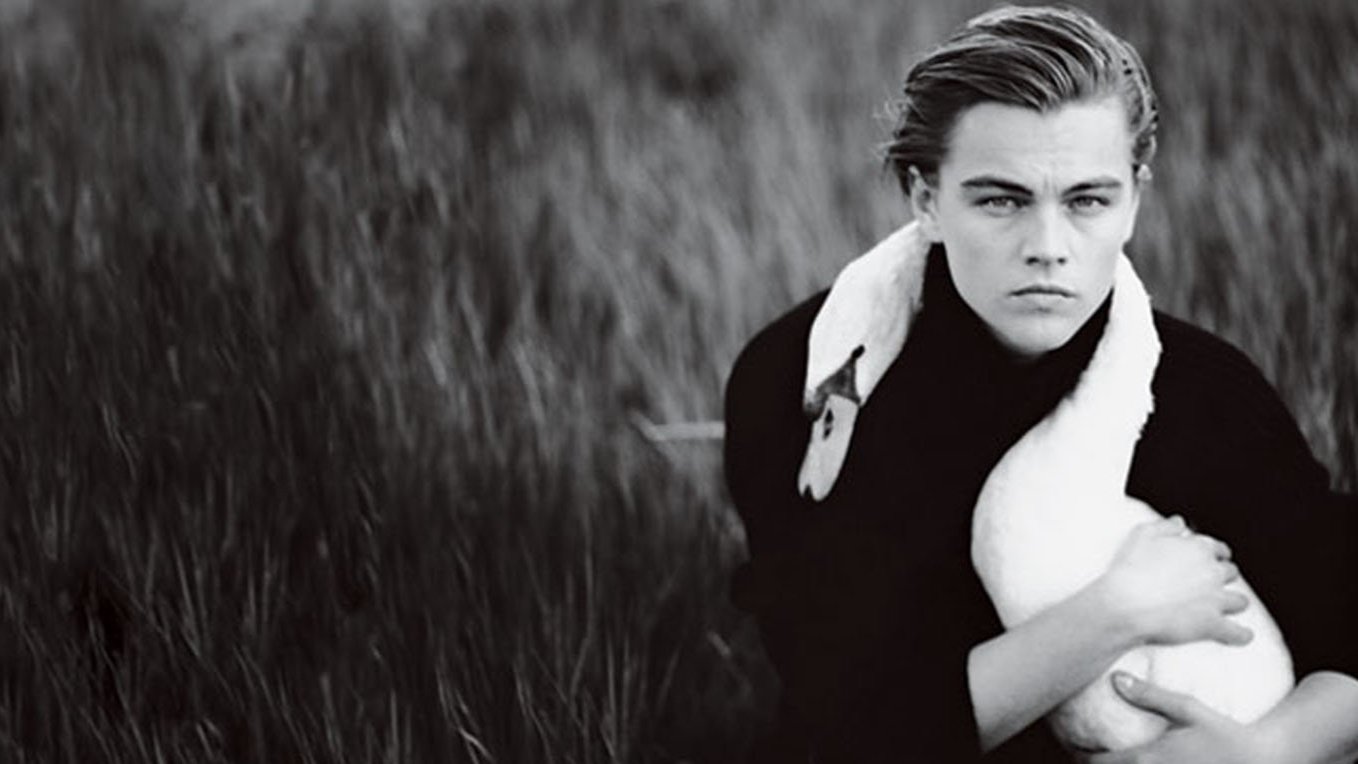







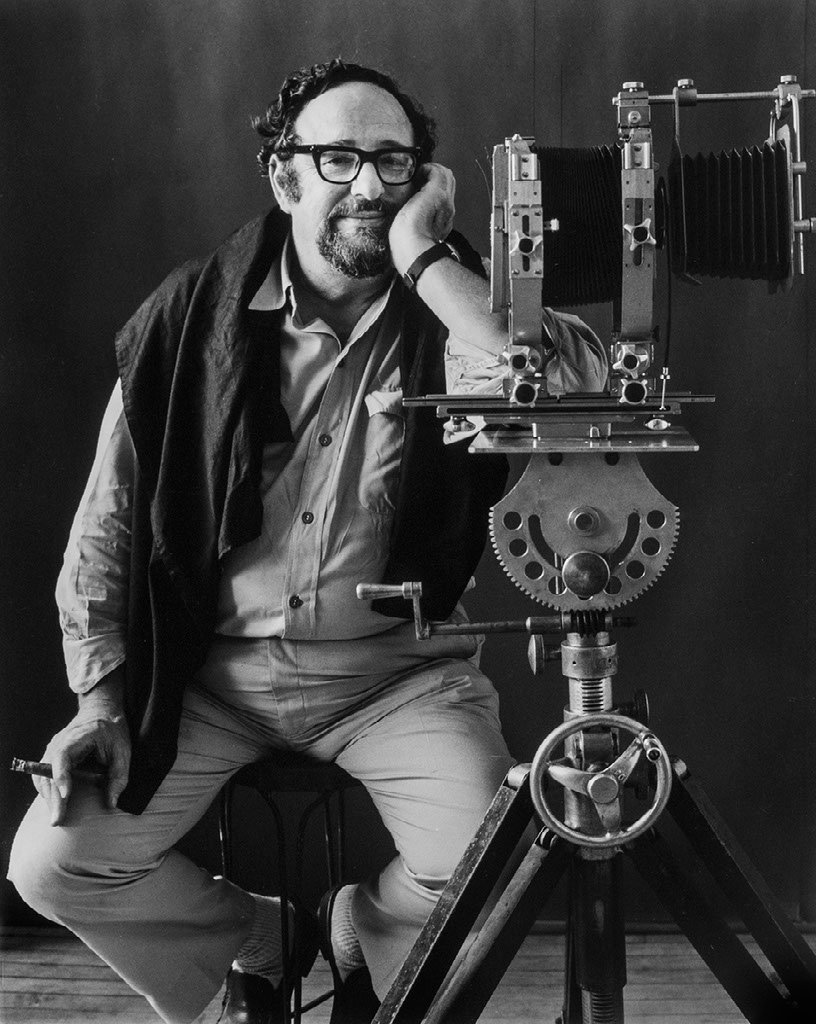
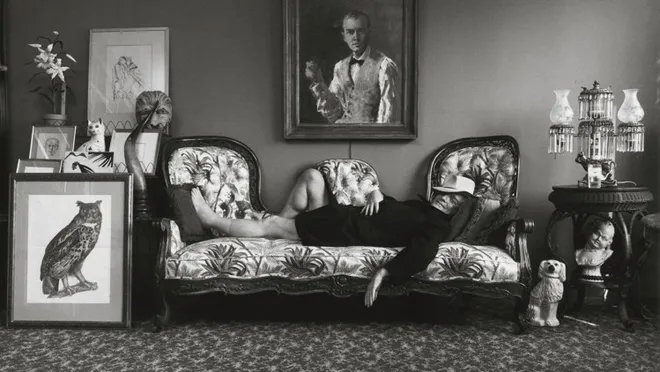
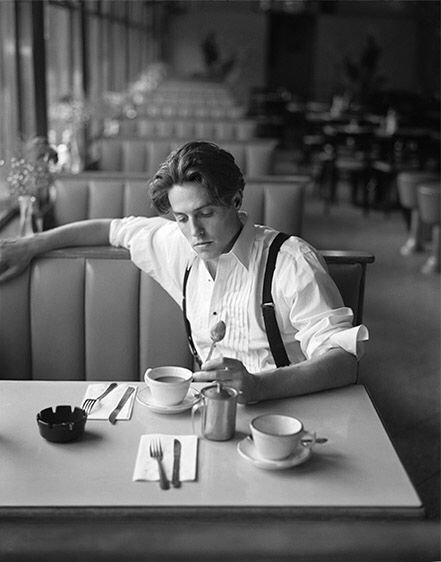




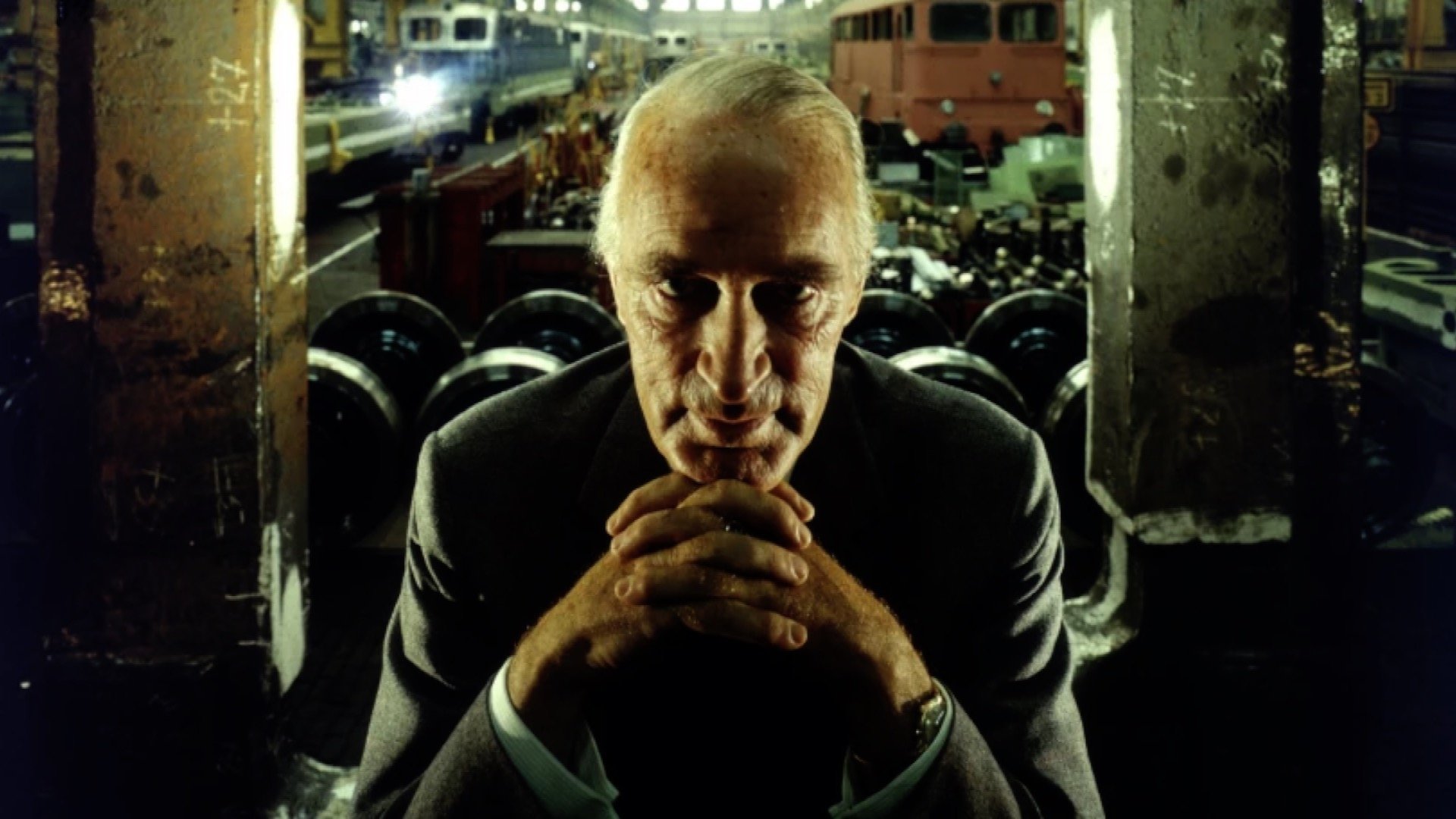






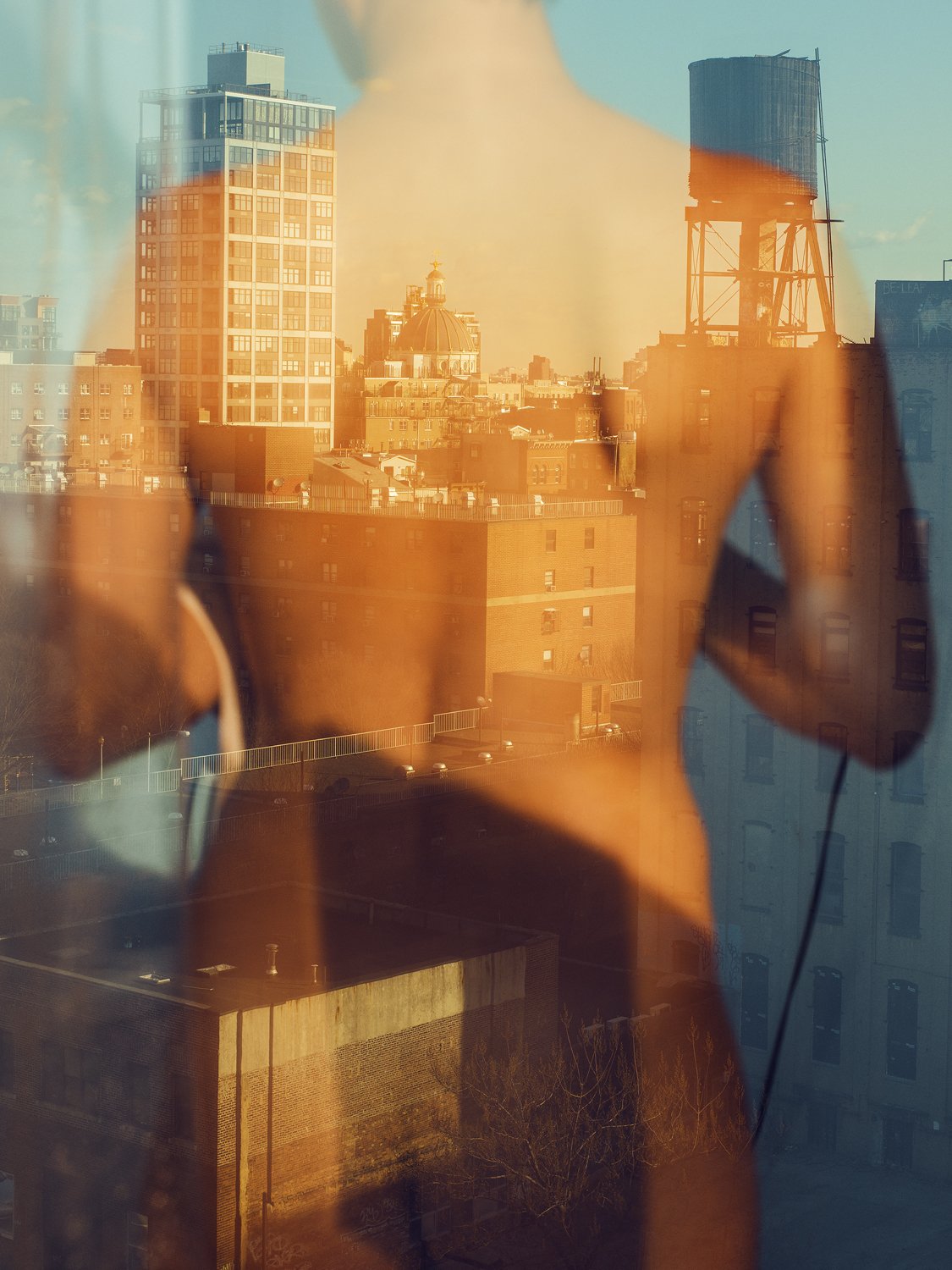





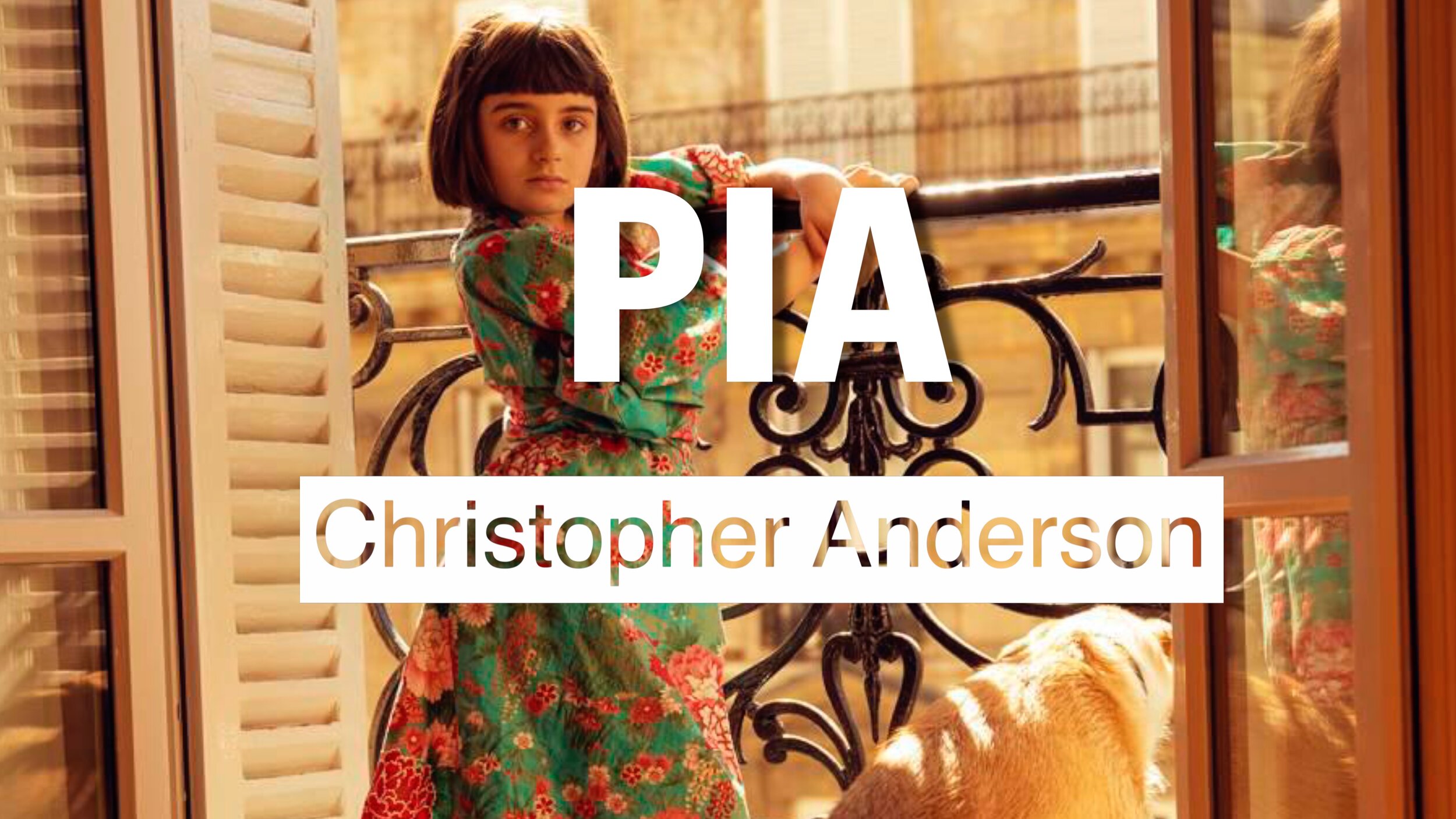
















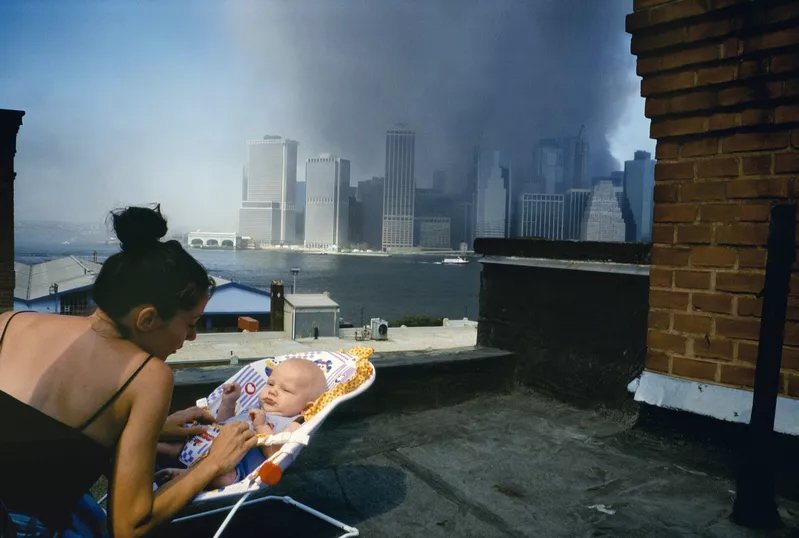























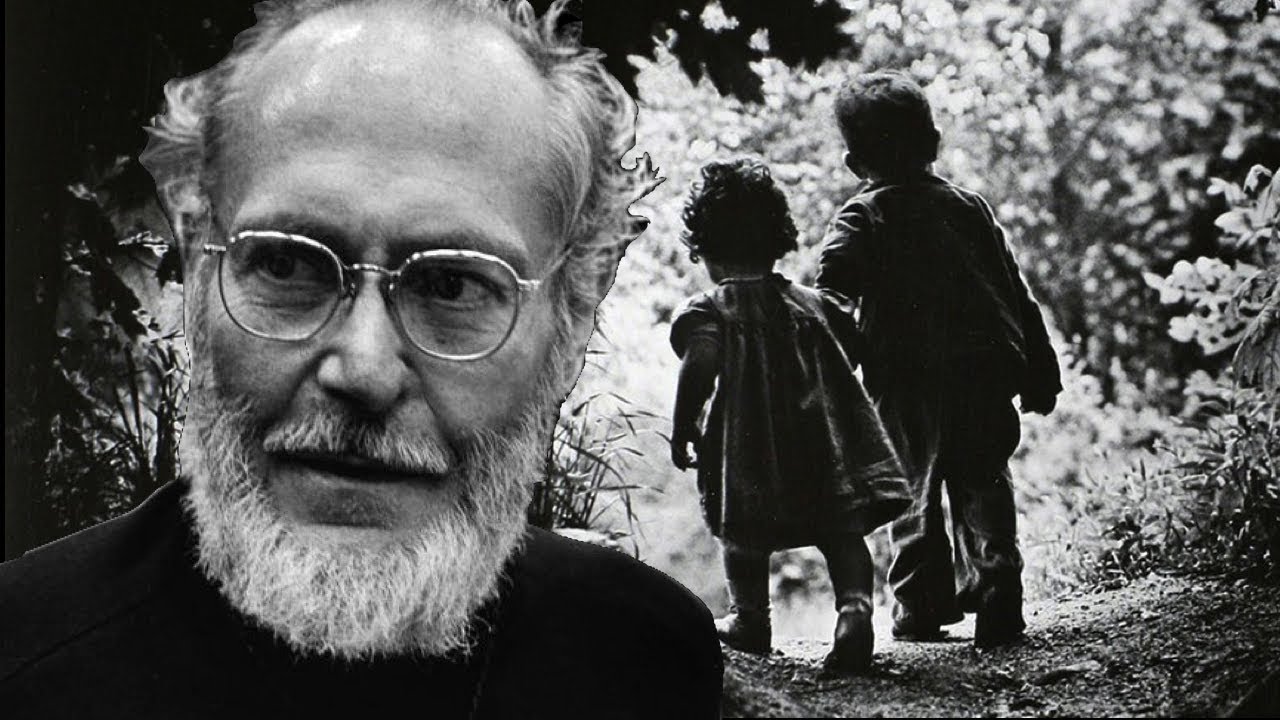

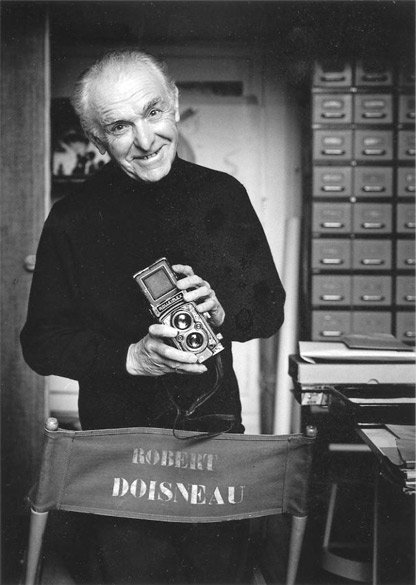


















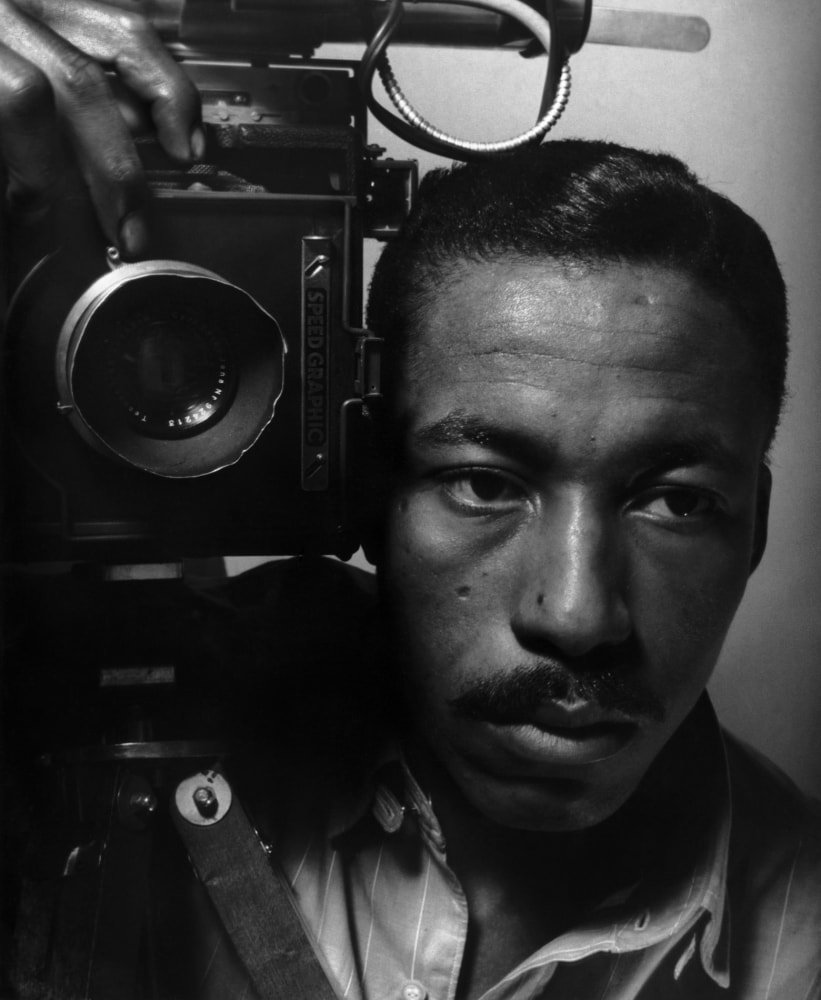














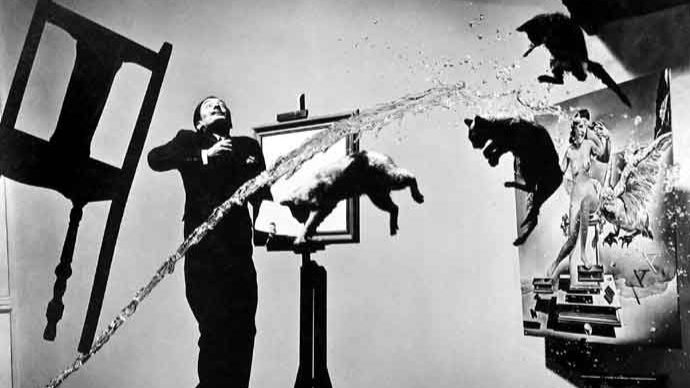









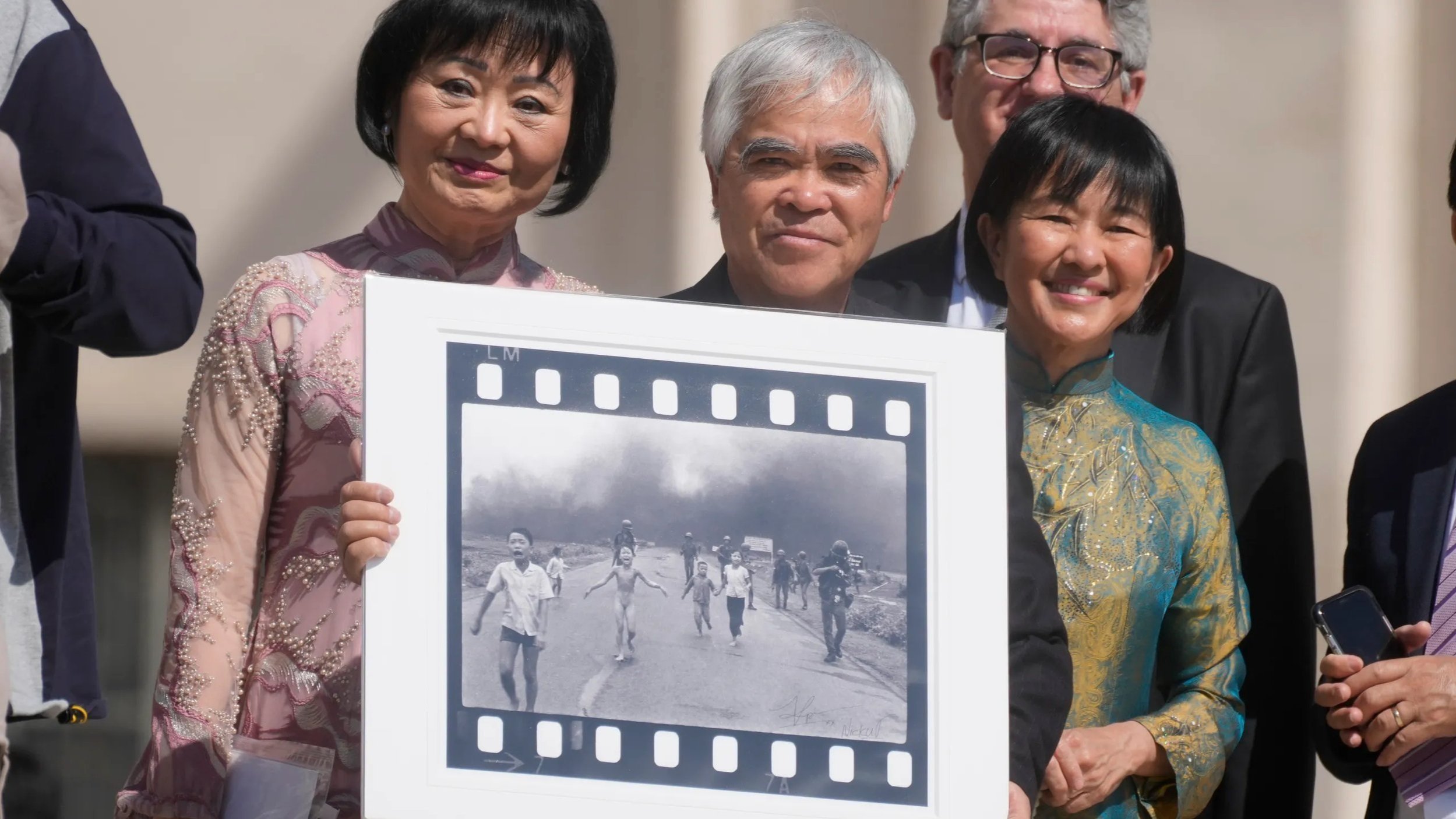






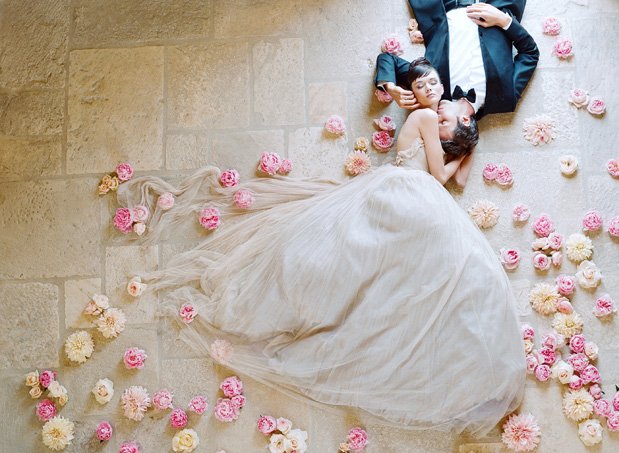


















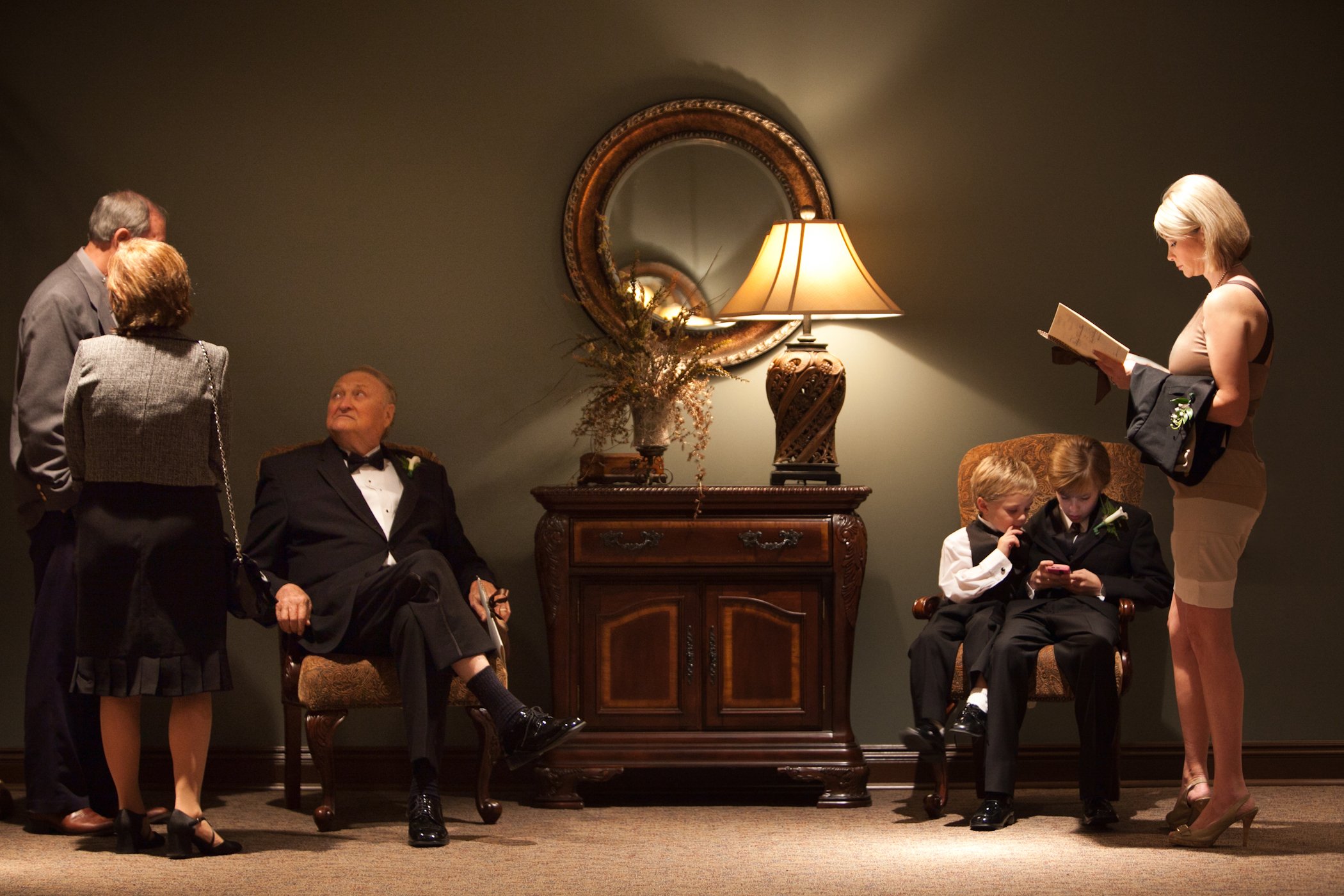
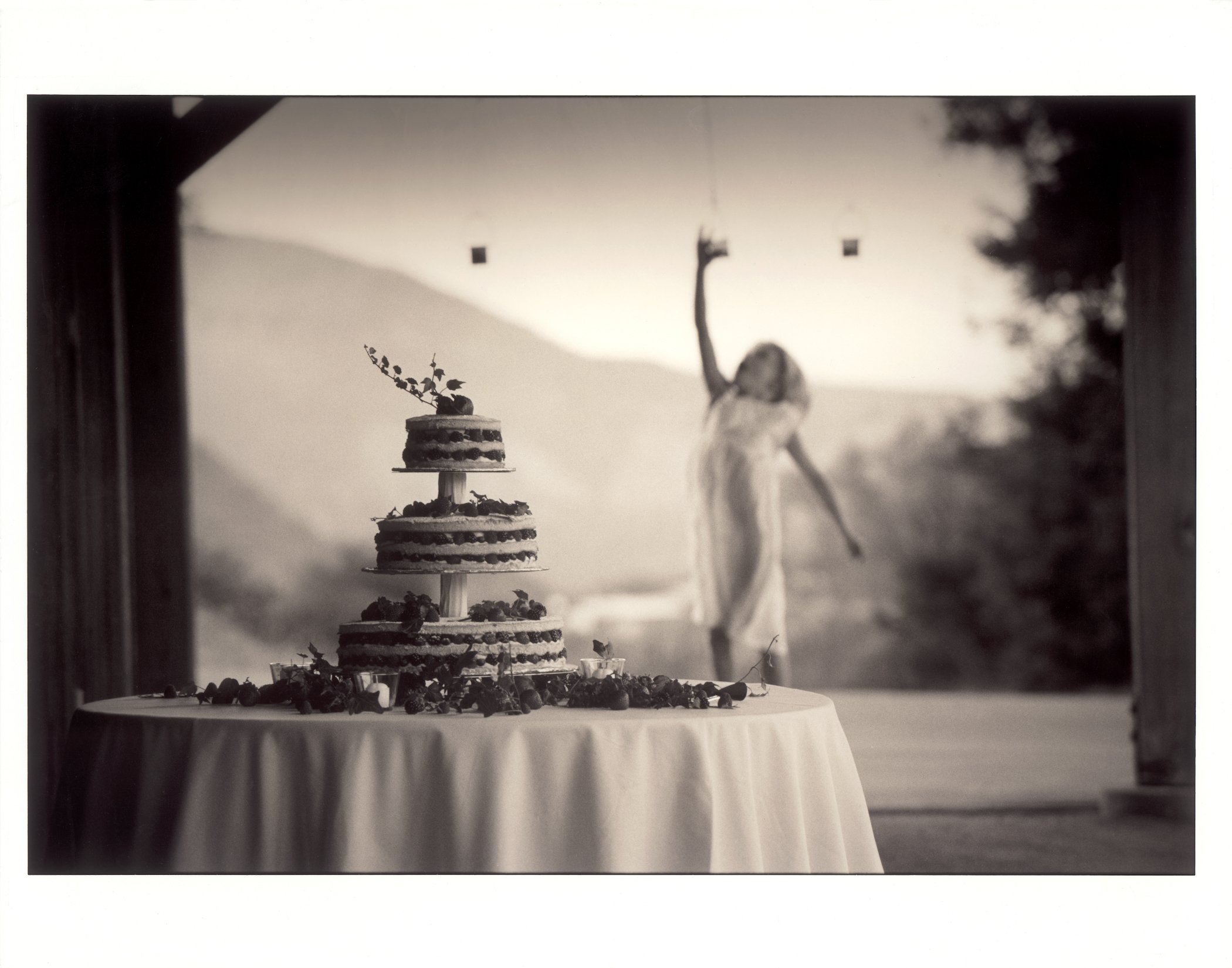


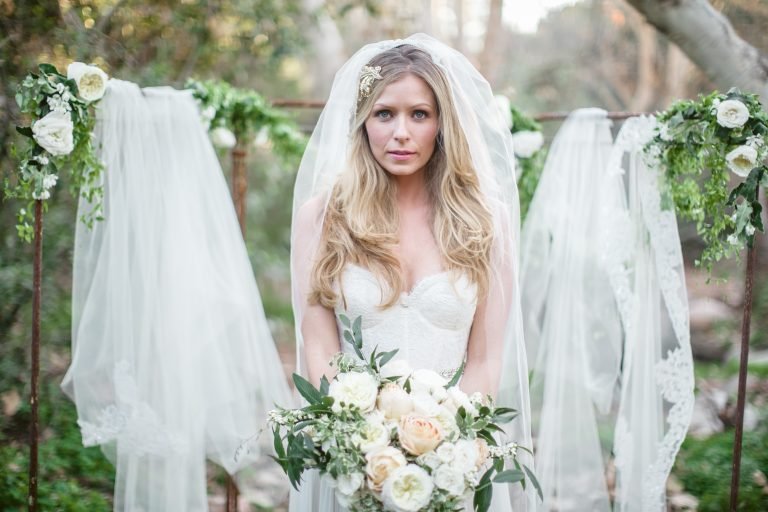











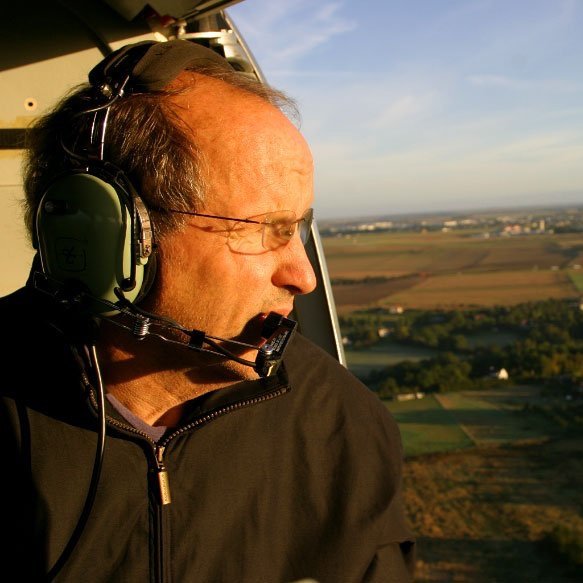

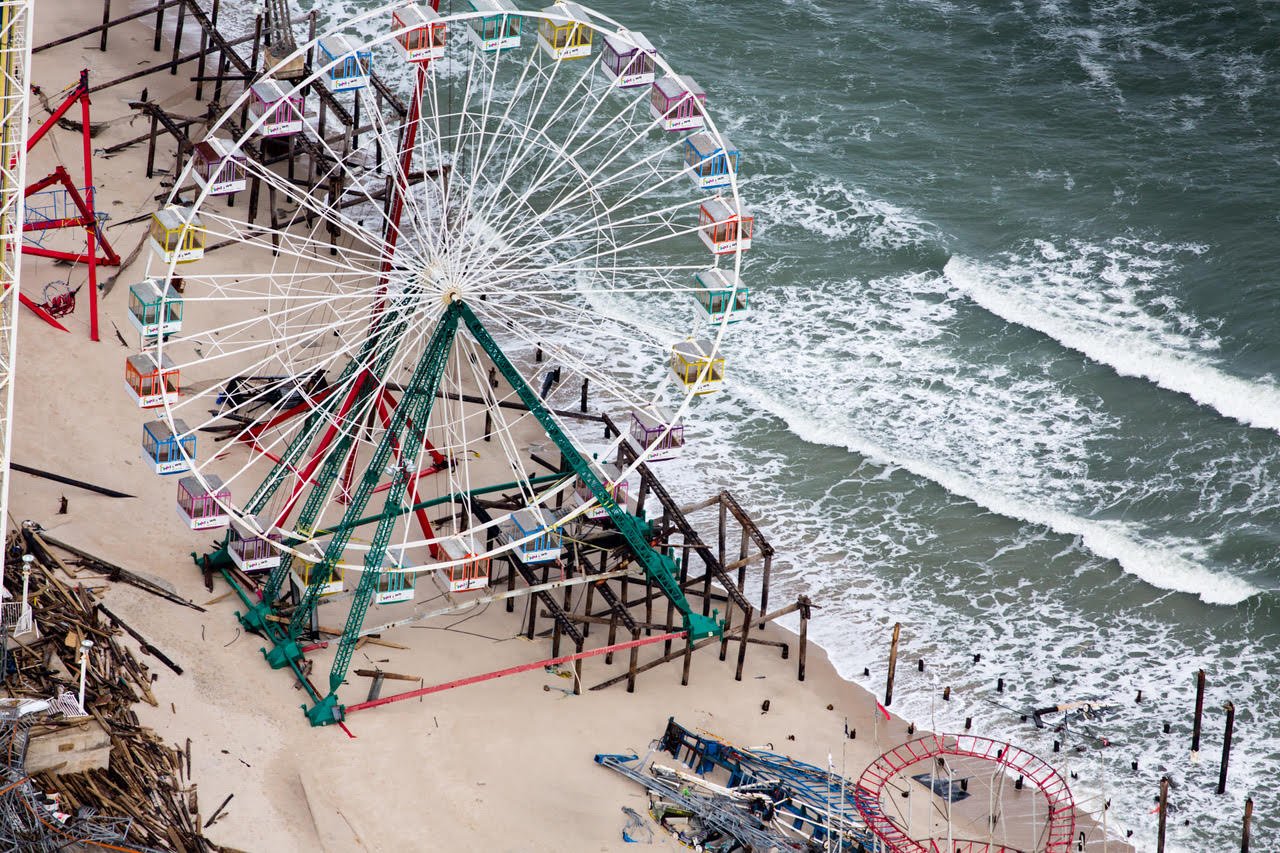



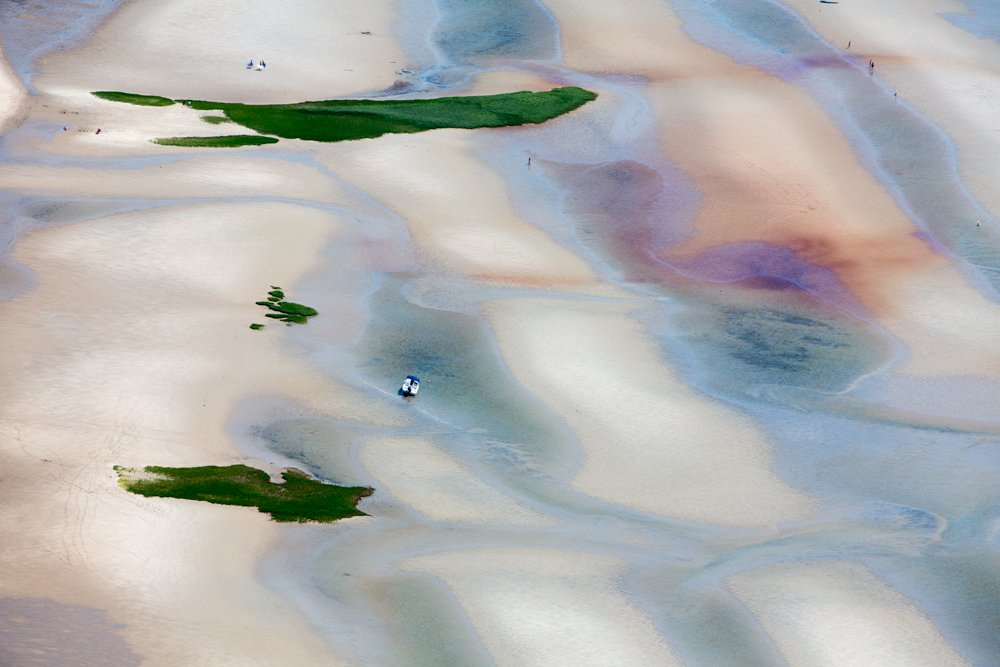













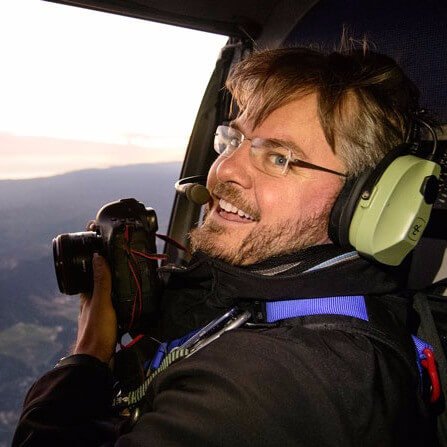





Discover how photographer David Douglas Duncan overcame the obstacles to gain access to Pablo Picasso's private studio, capturing iconic images of the artist at work and providing a rare insight into the creative process of one of the most influential artists of the 20th century.